Category: Index of Articles
-
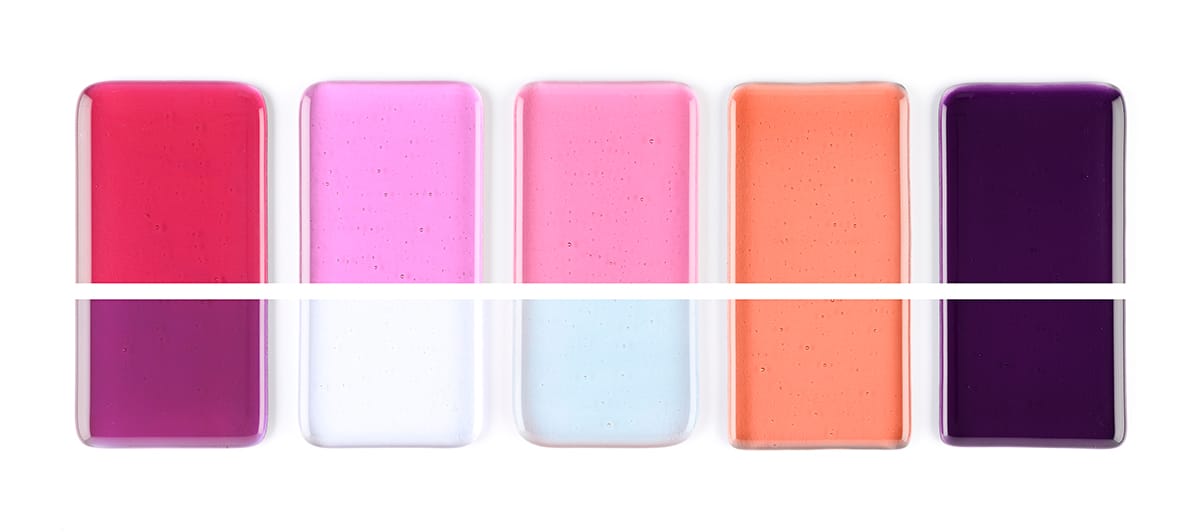
Properly Pink, Purple and More
Many of Bullseye’s glass styles must be fired before they strike to their intended color. Of these “strikers,” the pink / purple / coral family are made with gold as…
-
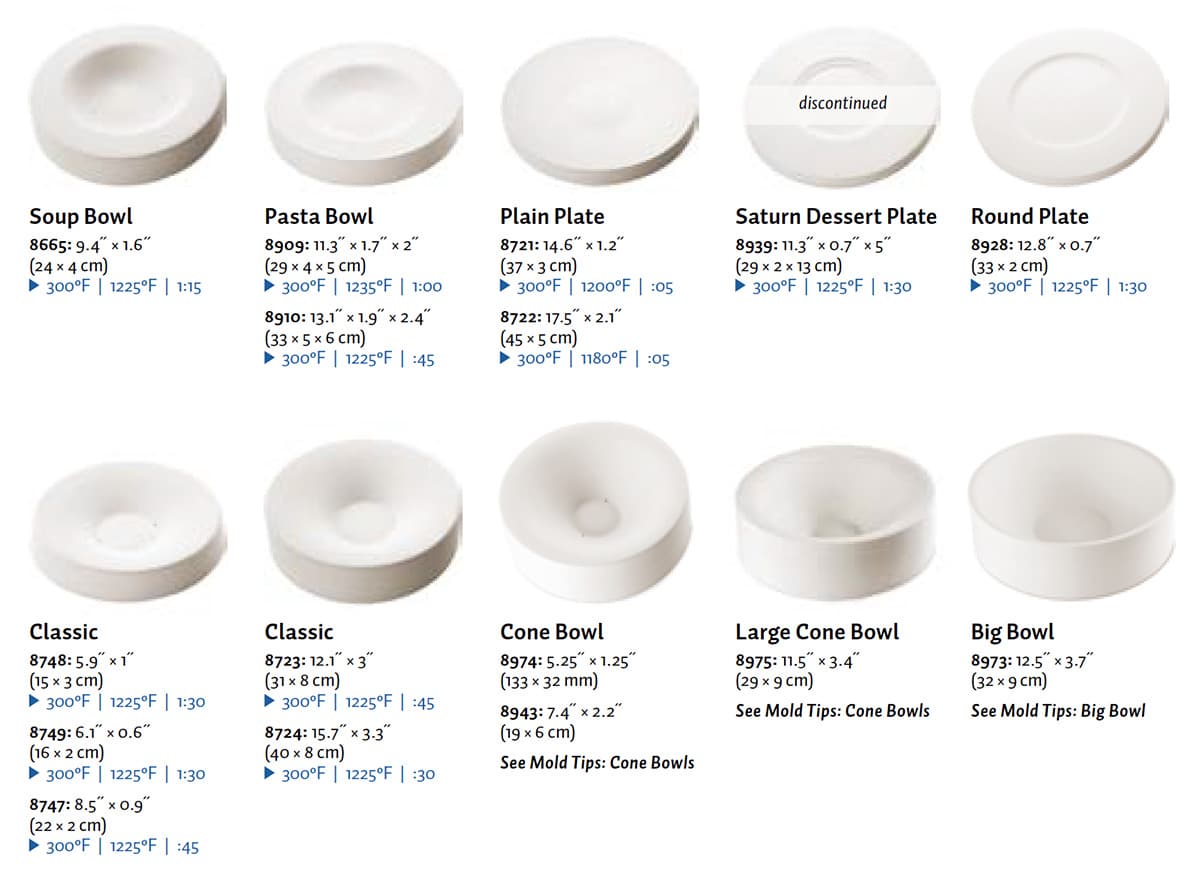
Suggested Slumping Schedules
Fahrenheit and Celsius These slumping schedules have been collected over years of experience at Bullseye’s Research & Education studios. Note that the schedules are intended as a starting point. Many…
-
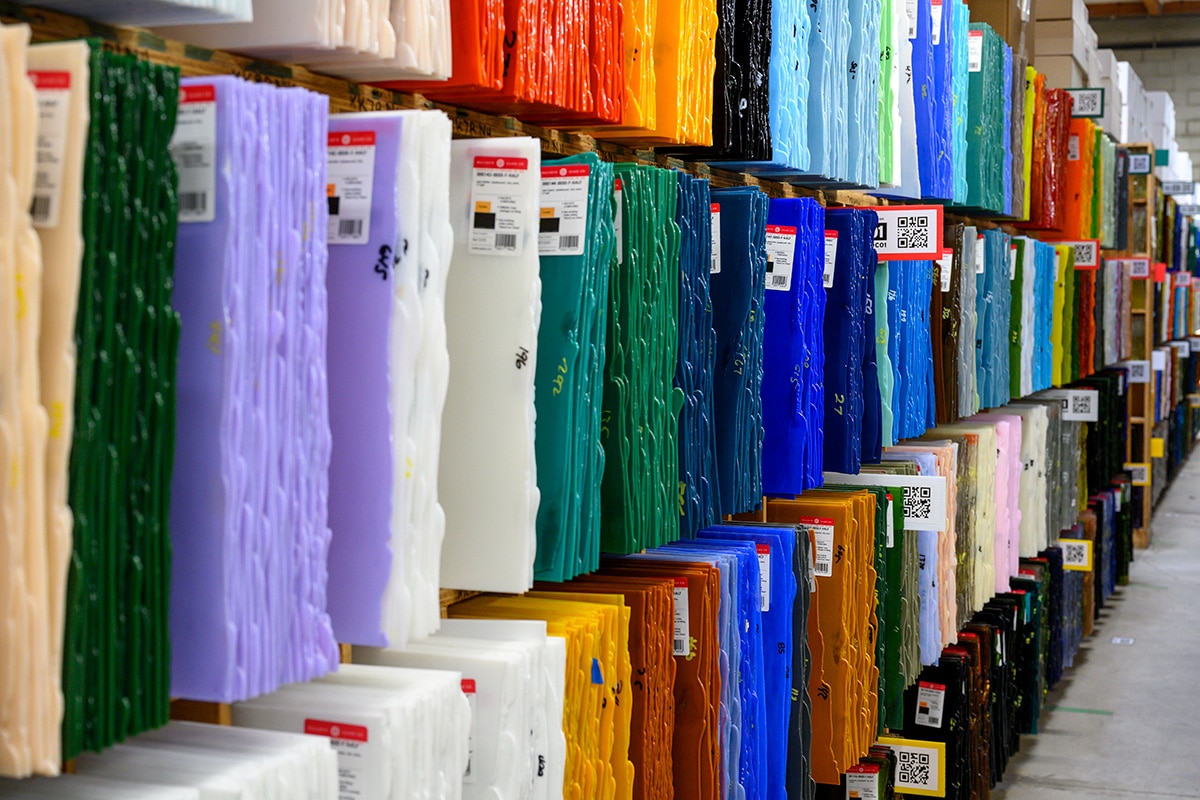
Inventory Worksheet
For the record Keep track of your glass and know when it’s time to restock with this inventory worksheet.
-
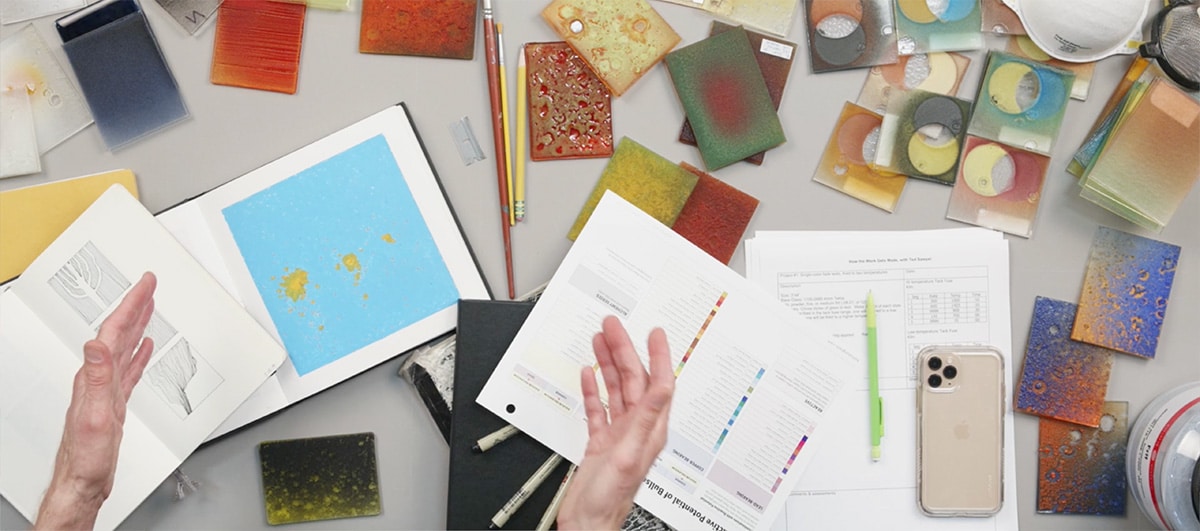
Kilnforming Project Notes
All the little details Get organized. Keep valuable records on your kilnforming projects, using forms designed by Bullseye technicians. The three-hole-punch format fits standard binders.
-
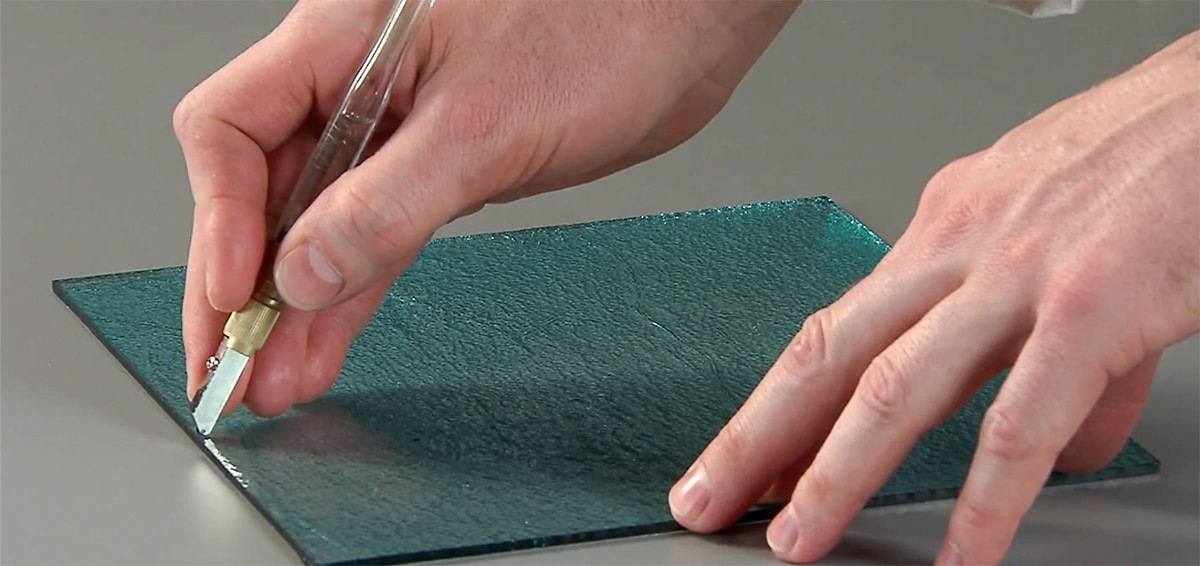
12 Ways to Improve Your Glass Cutting
Basic Principles BUY THE BEST CUTTER YOU CAN AFFORD. If it helps you to cut accurately and comfortably, it will save you money in the long run. Look for a…
-
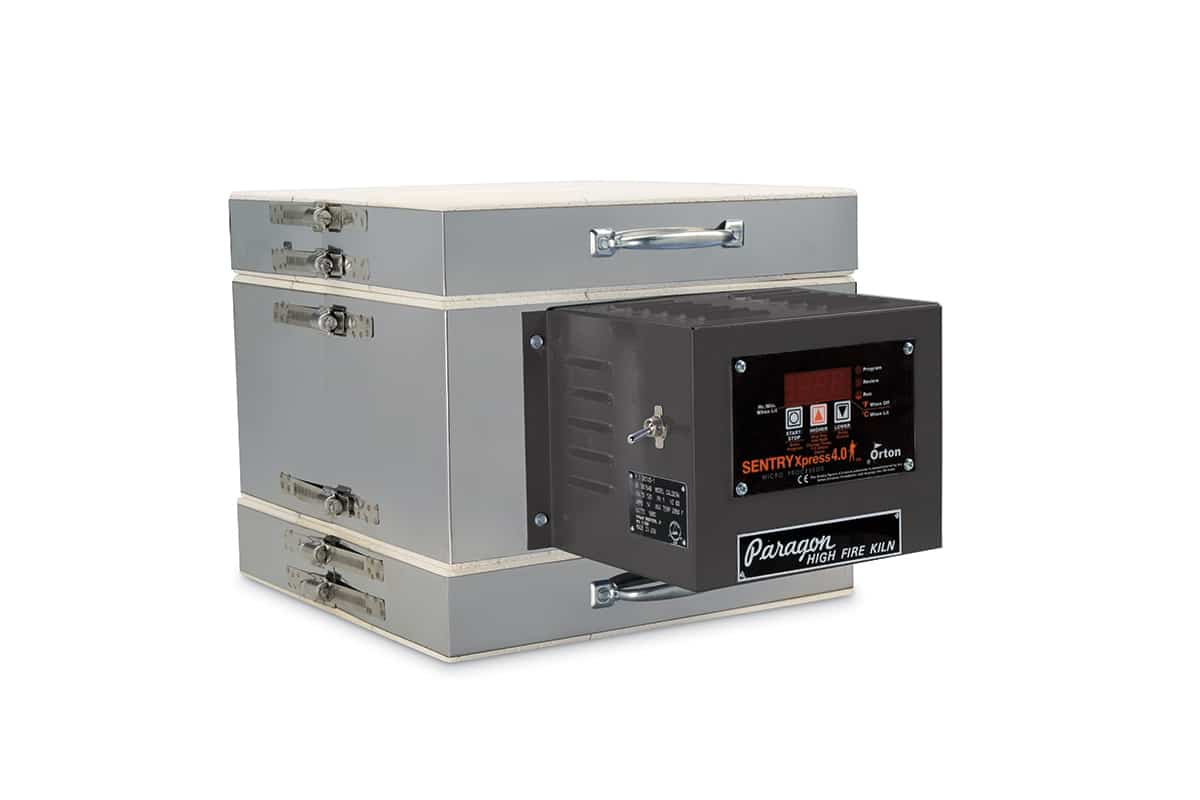
TechNotes 2: The Vitrigraph Kiln
A Key Tool for Painting with Light Fused glass is frequently characterized by a cut-and-fit approach to design. Various shapes of colored glass are cut and fired to a base…
-
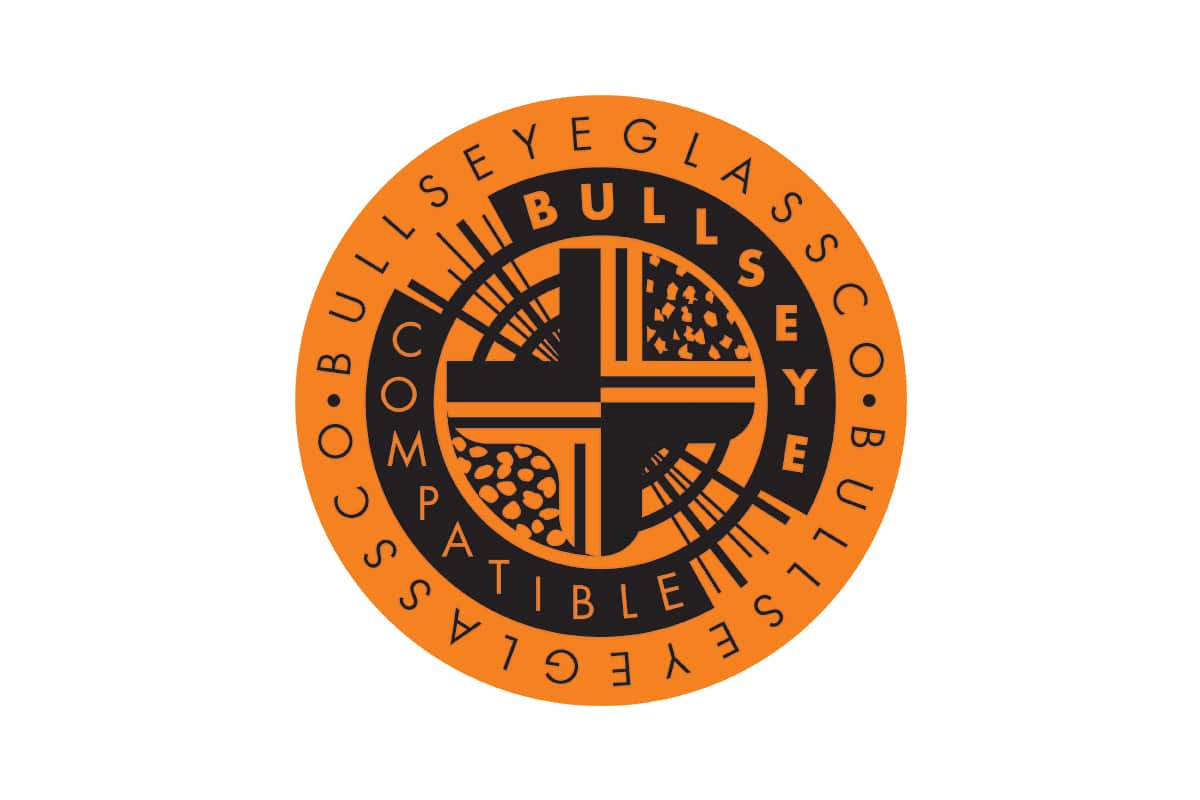
TechNotes 3: Compatibility of Glass
Why COE Isn’t the Whole Story A misunderstanding that the compatibility or “fit” of two glasses is solely a function of their expansion properties has led to an overemphasis on…
-
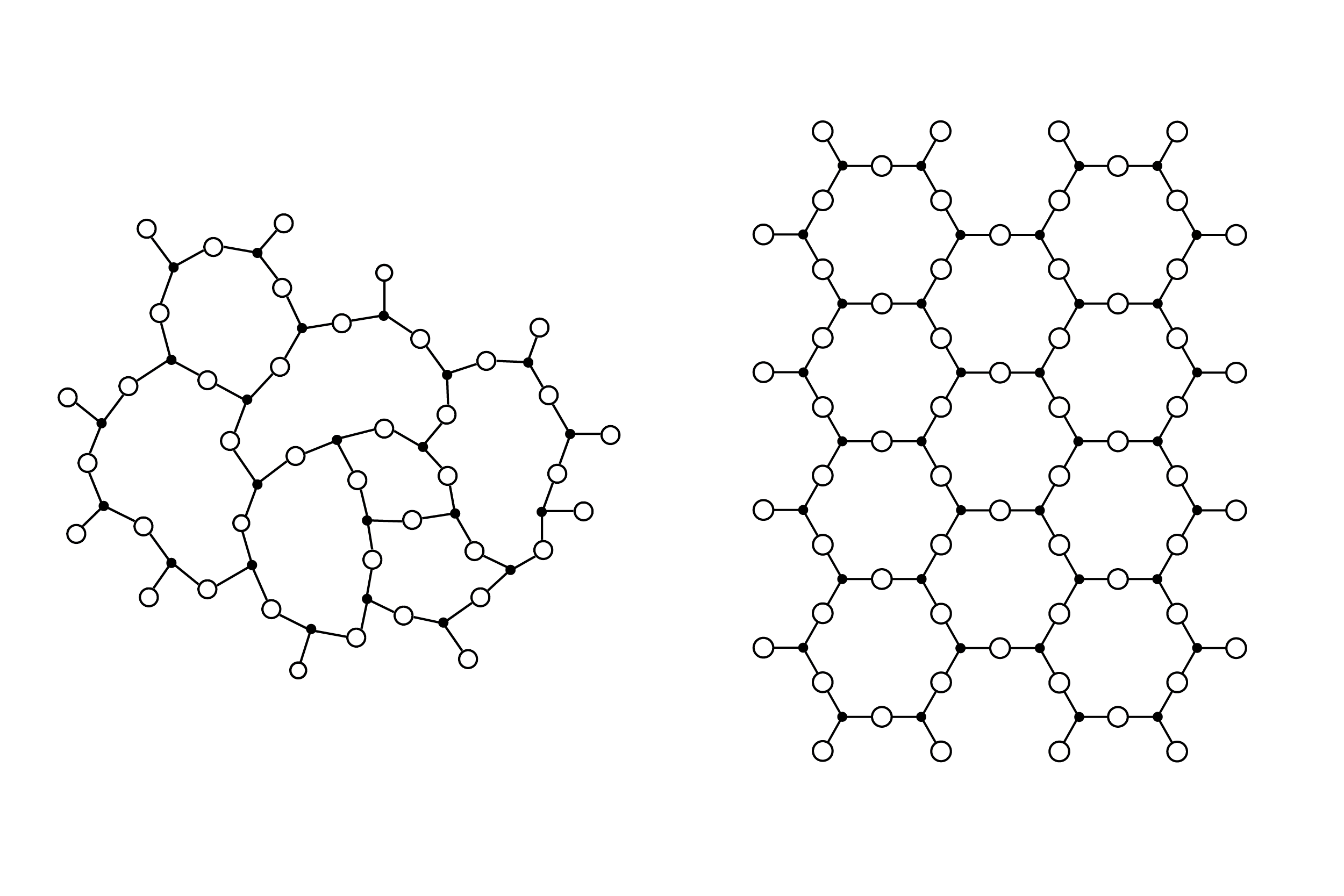
TechNotes 4: Heat & Glass
The Unique Nature of Glass—the Supercooled Liquid Glass is an amorphous material. Its molecules are not arranged in a regular, specific pattern, like those of a crystalline material (such as…
-
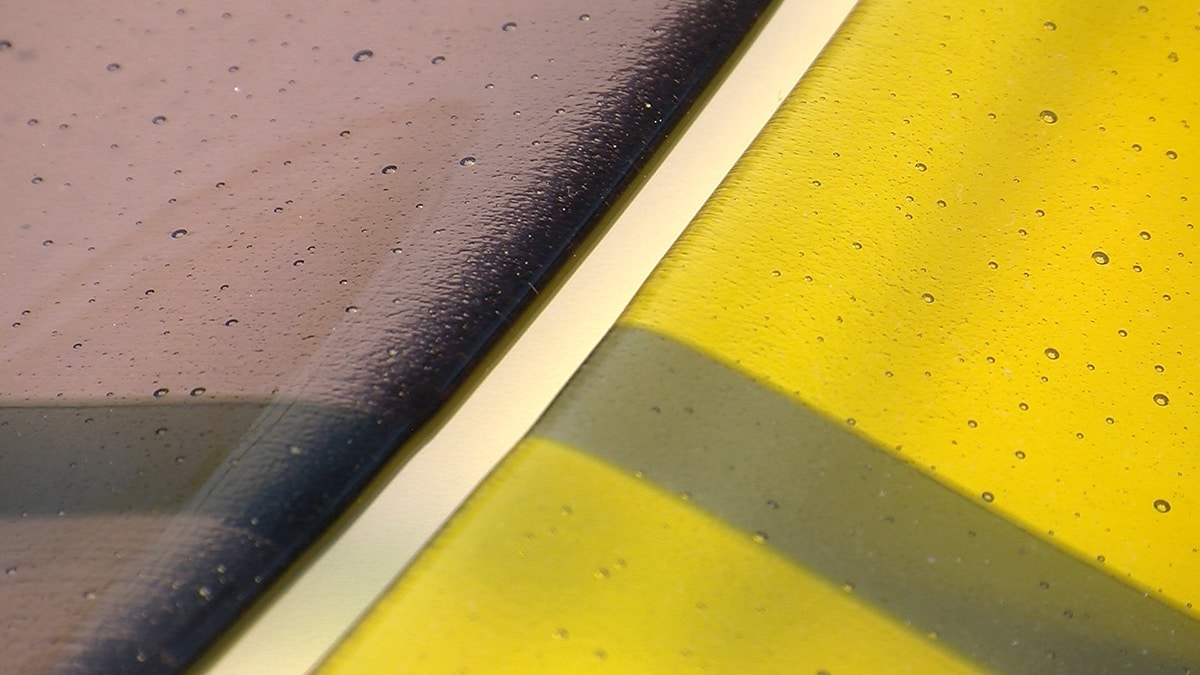
TechNotes 5: Volume & Bubble Control
Understanding Distortion & Trapped Air When Firing Bullseye Glass Two common problems encountered when fusing glass are distortions of shape and unanticipated bubbles. To avoid these effects—or to engineer them…
-
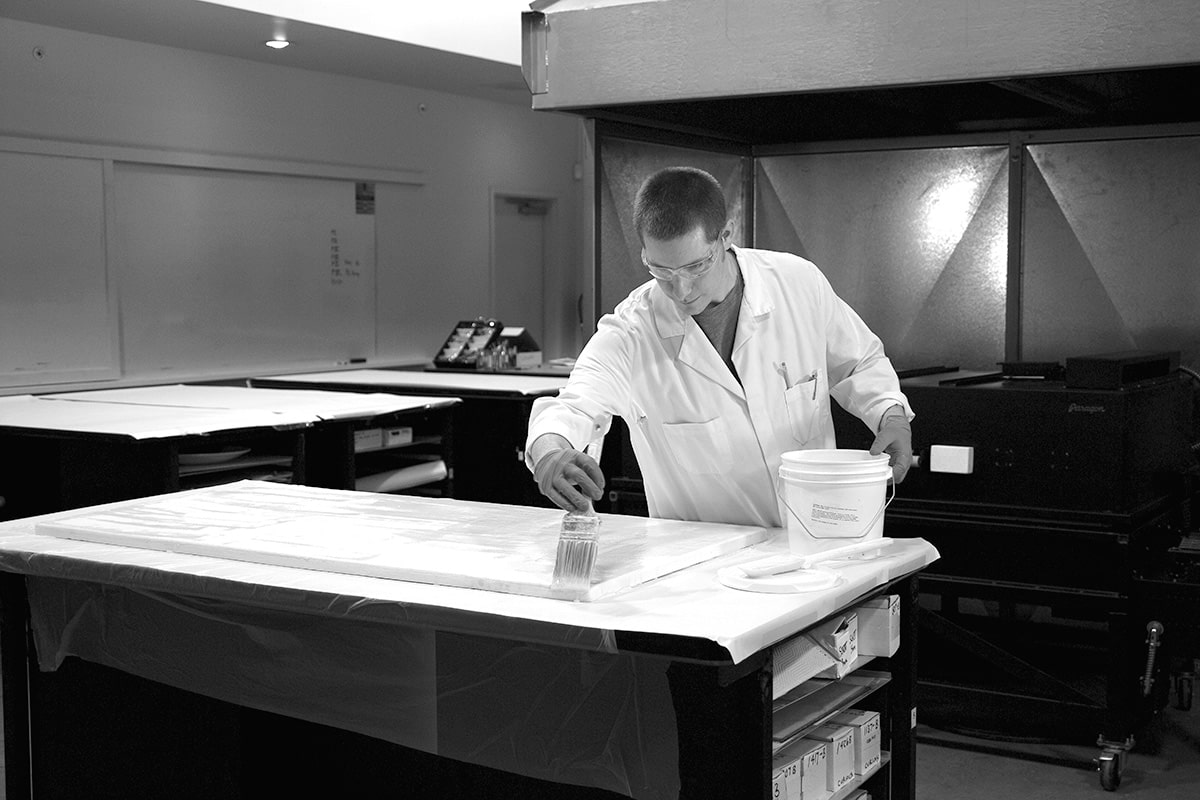
TechNotes 6: Preparing the Shelf System for a Large Kiln
Creating a Reliable Shelf System Creating large, finished glasswork that is flat, uniform, and well annealed is highly dependent upon having a reliable shelf system. An ideal shelf system for…
-
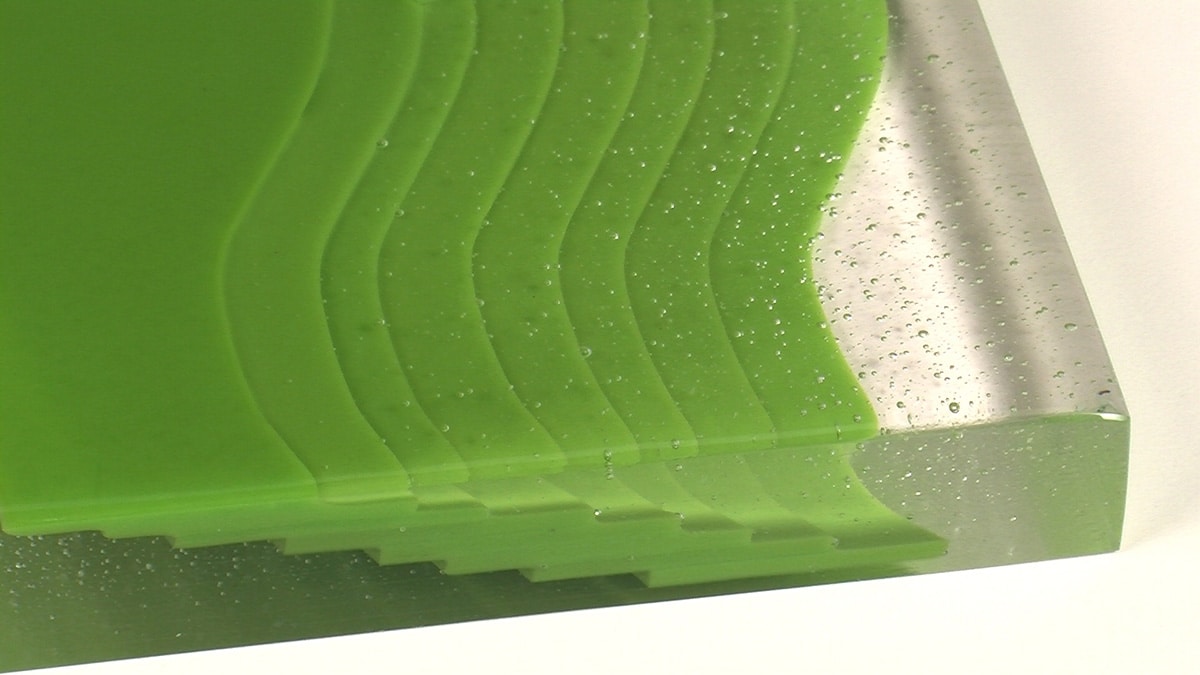
TechNotes 7: Monitoring Kiln Temperatures for Successful Annealing
The Importance of Achieving Uniform Cooling When kilnforming glass, especially largescale work, it is important to cool the glass uniformly throughout the annealing range. The temperature difference within the glass—from…
-
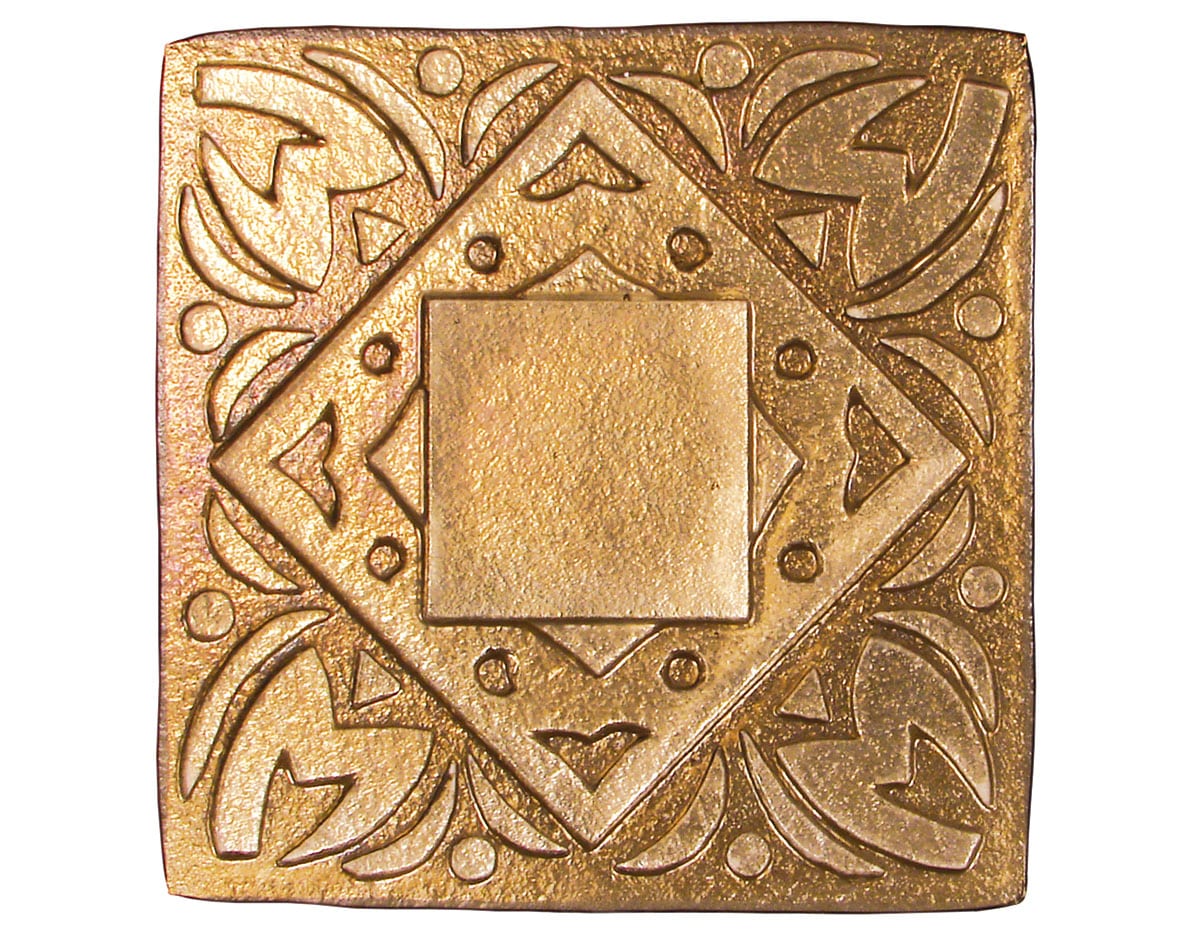
TipSheet 1: Kilncarving
A Simple Kilnforming Technique Developed by Rudi Gritsch “Kilncarving” is a term coined at Bullseye to describe a simple kilnforming process that achieves a bas relief, textured, or sculpted look…
-
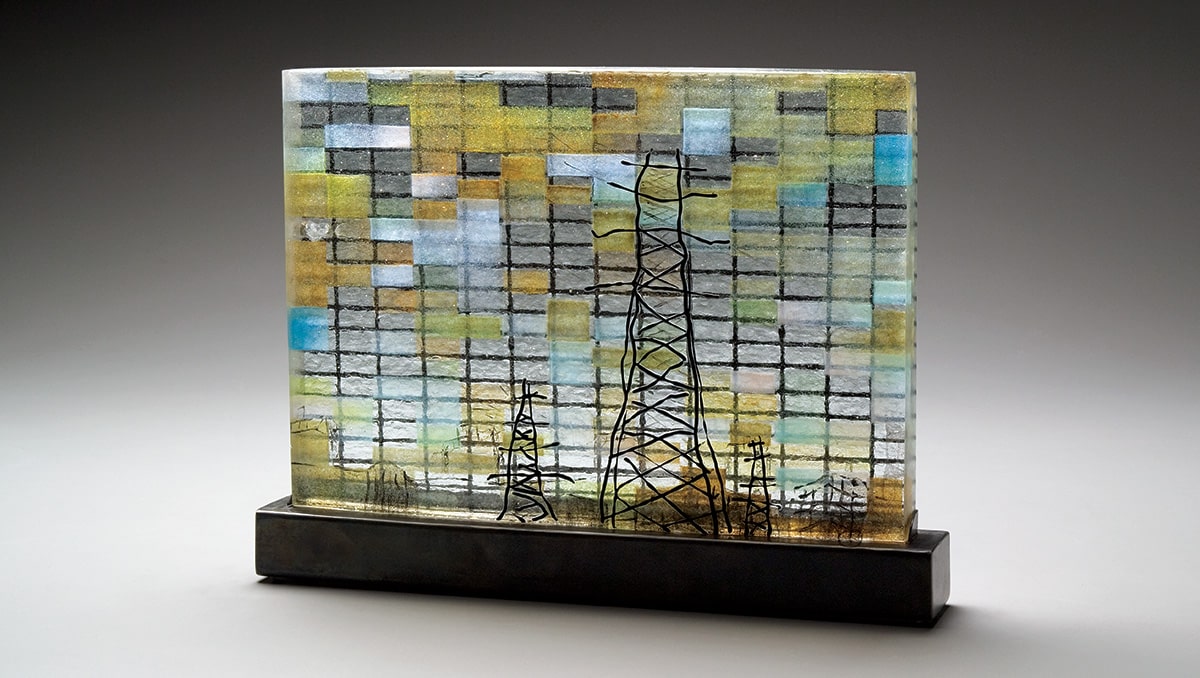
TipSheet 3: Working Deep
Stack Firing for Embedded Imagery This TipSheet will introduce you to ways to float imagery and color within thick blocks of clear glass. Historically, thick glass castings have resulted from…
-
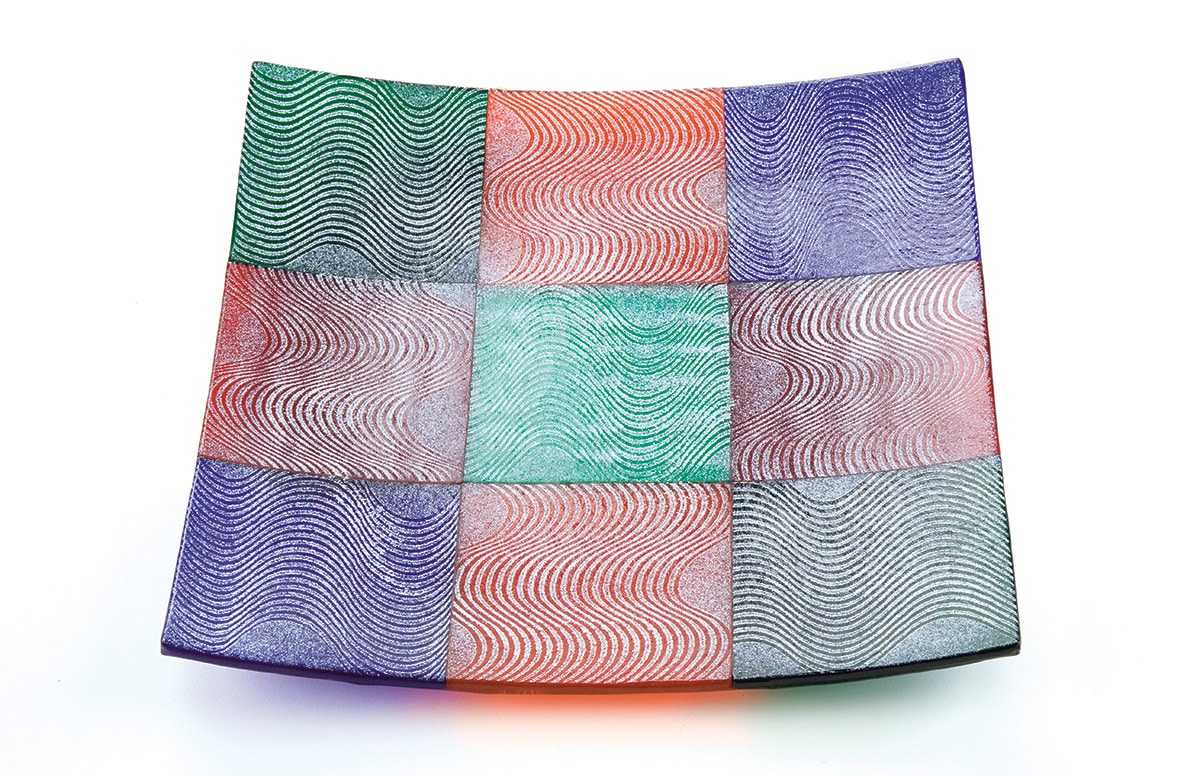
TipSheet 4: Designing Your Own Art Glass
Discover One of the Most Empowering Potentials of Glass Fusing Working with a palette of glass frit, powder, and stringers, you can create unique sheets of art glass to use…
-
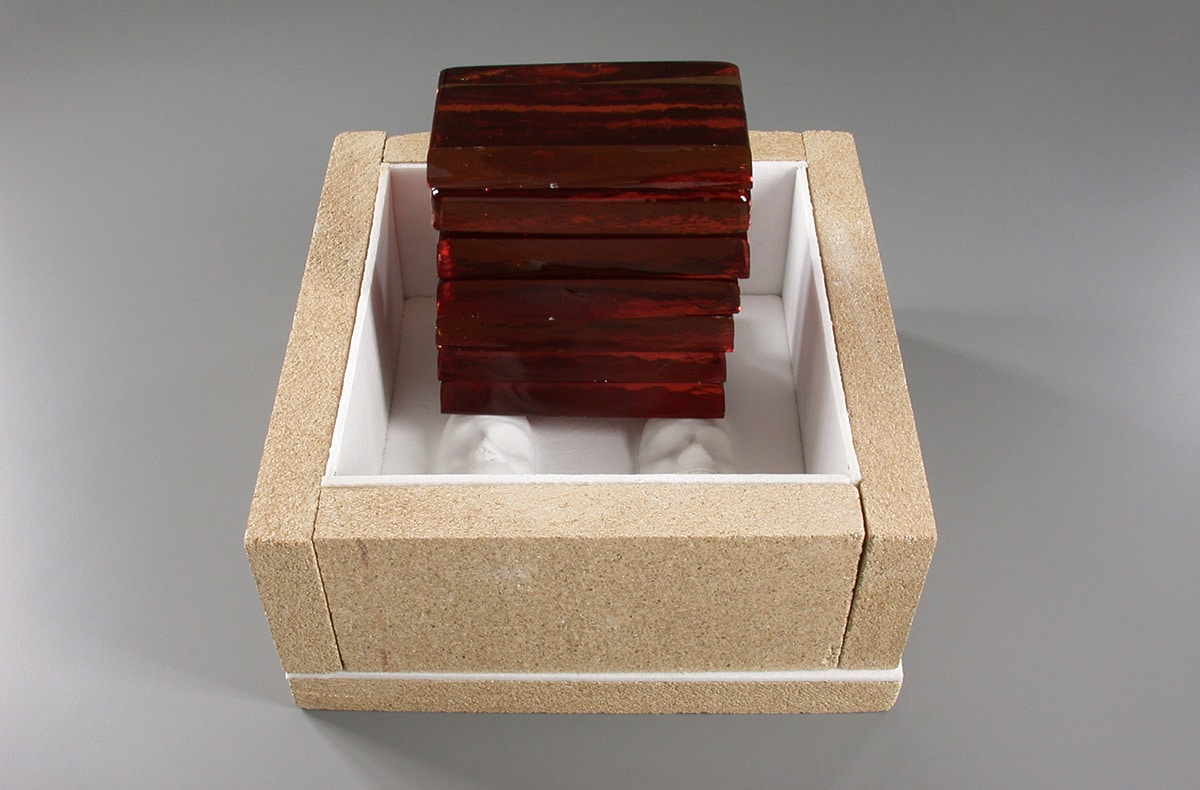
TipSheet 5: Bullseye Box Casting
Reverse-Relief Kilncasting in an Assembled Mold This TipSheet describes how to create a reverse-relief cast glass object with the optical clarity of a furnace casting, using plaster/silica design elements in…
-
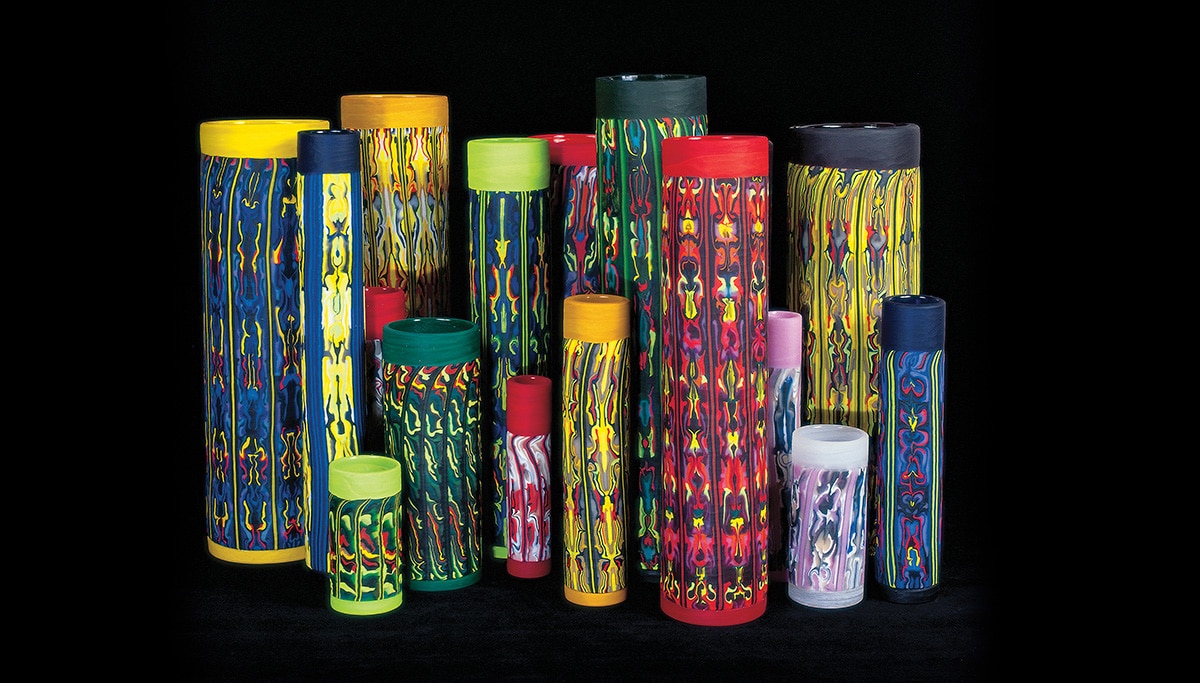
TipSheet 6: Roll-Ups
A Brief History of the Roll-Up In 1993, Klaus Moje and Dante Marioni took part in the Connections project at the Bullseye factory in Portland. Together they explored the idea…
-
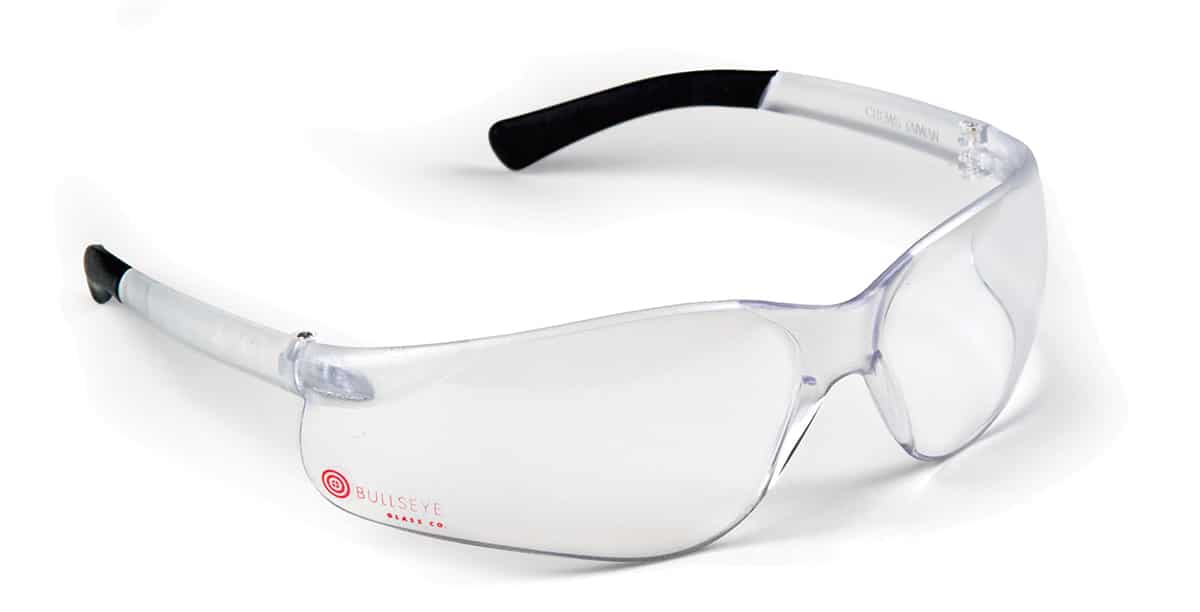
Safety in the Kiln-Glass Studio
General Considerations Good housekeeping and common sense go a long way toward ensuring safety in the kilnforming studio. Ventilate your studio well, keep dust to a minimum, and confine hazardous…
-
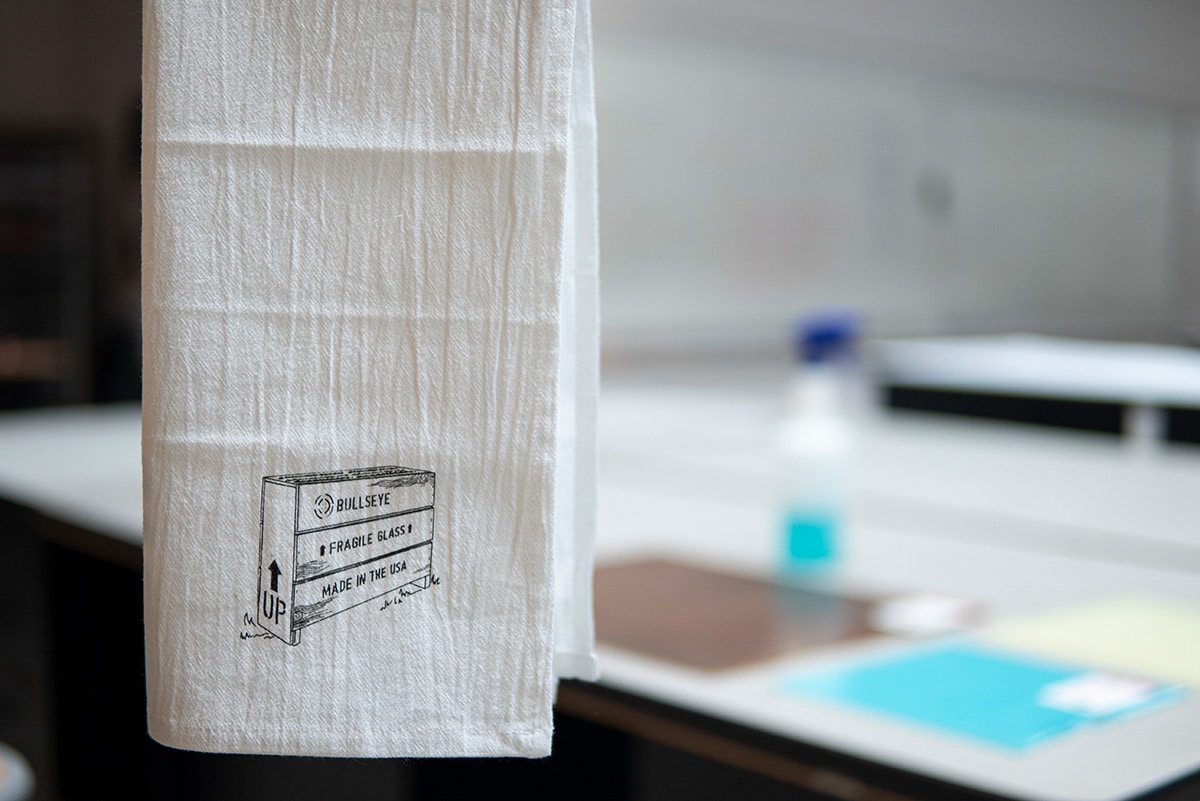
Glass Cleaning Basics
Simple & Essential Cleaning glass before firing it removes problem causing contaminants like glass-cutting fluid, oils, minerals, salts, dusts, fibers, sticker residues, fingerprints, and pen marks. If these substances are…
-
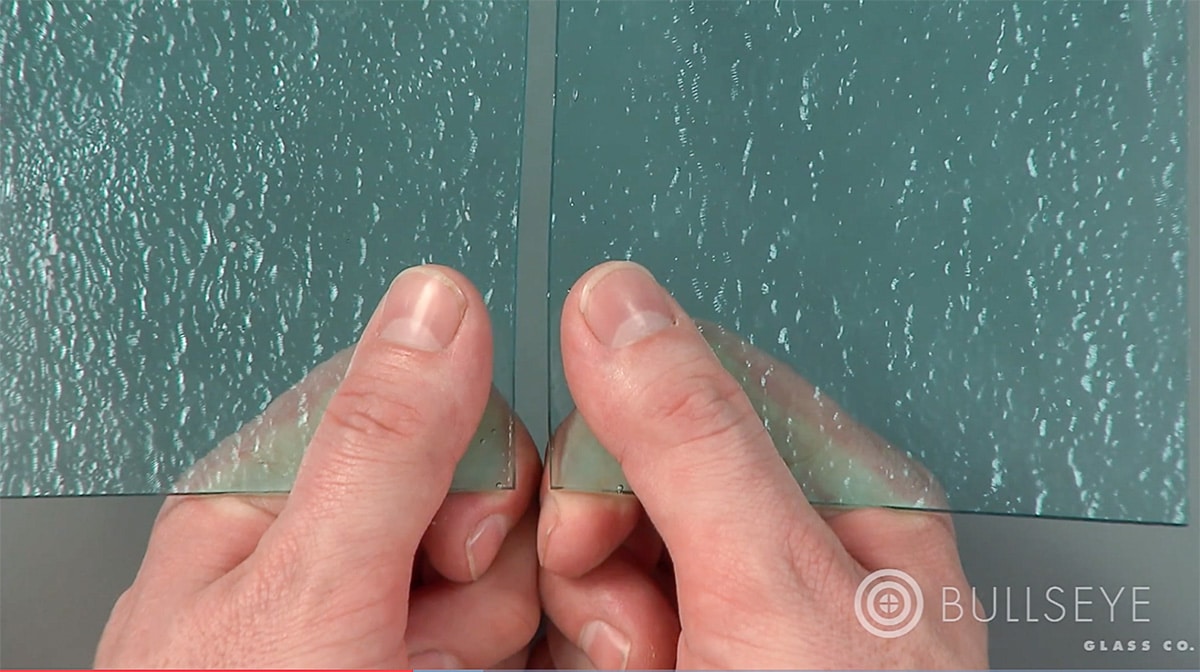
Glass Cutting Basics
Basic Principles A glass cutter does not saw glass. Rather, its cutting wheel “scores” the glass—creating a shallow fissure as it rolls across the surface. This fissure, or “scoreline,” breaks…
-
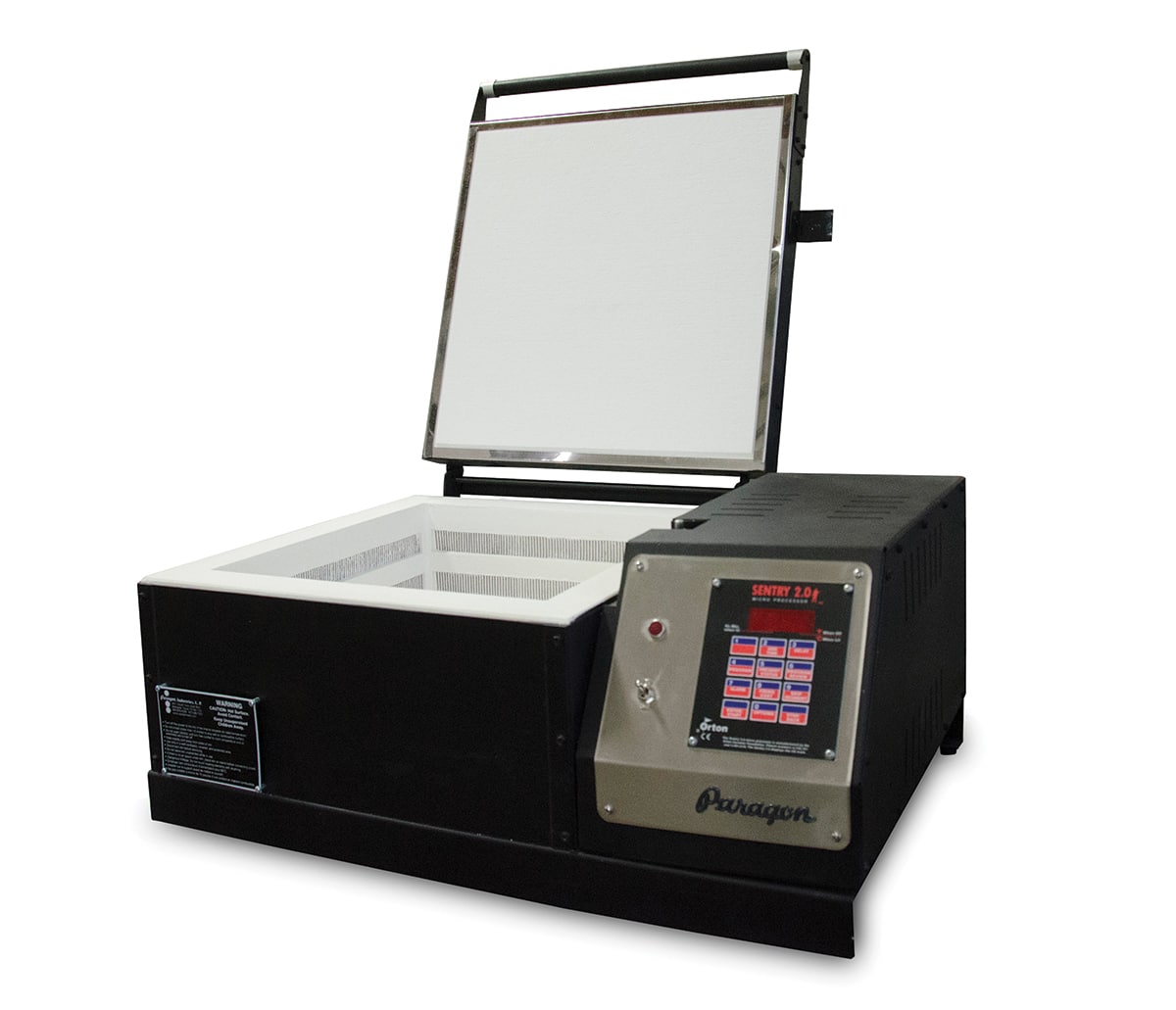
TechNotes 1: Knowing Your Kiln
Improve Kilnforming Results To achieve control in firing glass, it is necessary to understand how heat is distributed within the kiln you are using. Kiln heat is rarely even. Top-fired…
-
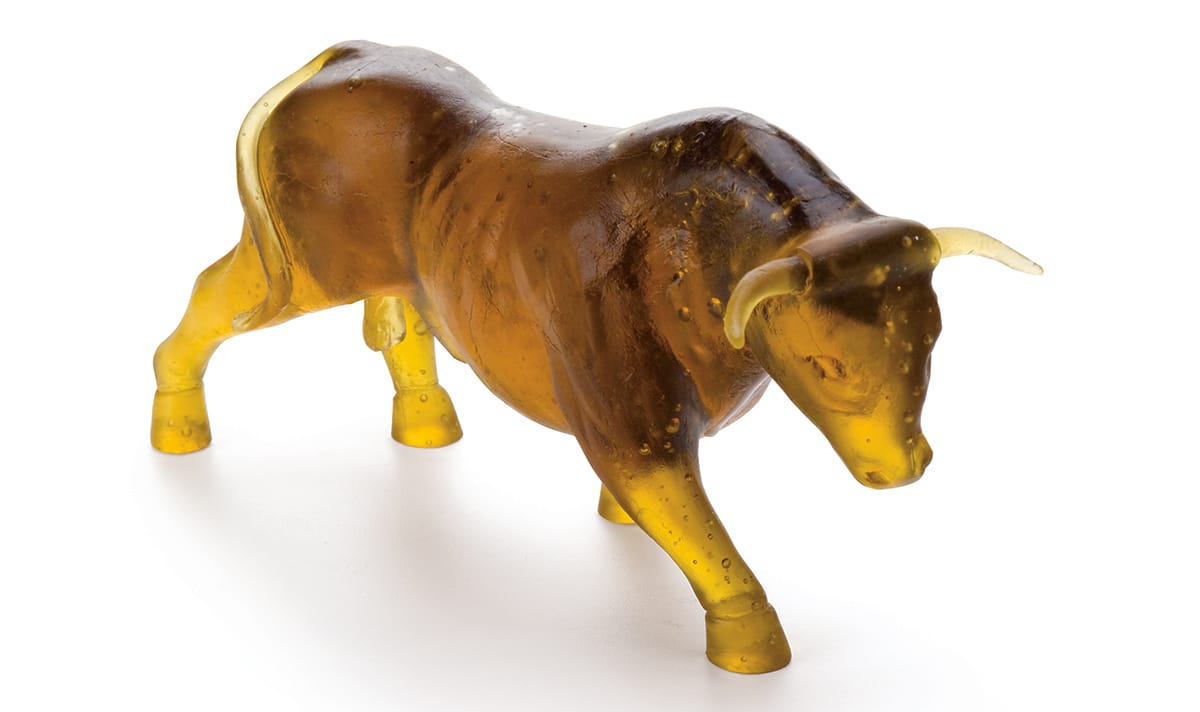
TipSheet 8: Basic Lost Wax Kilncasting
Unleash Your Unlimited Forms Lost wax kilncasting is a versatile method for making glass pieces in almost any form imaginable. The process involves creating a refractory mold around a wax…
-
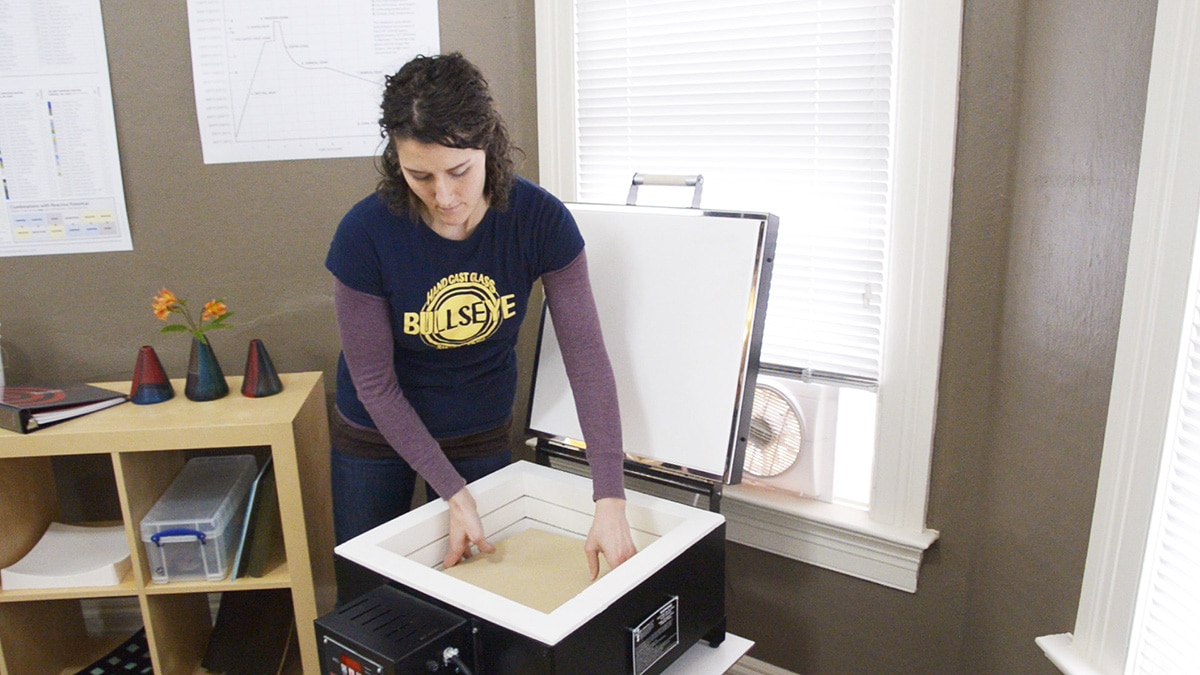
Pre-Firing Your New Kiln
One Final Preparation Step Before using a new kiln for glass projects, you will need to pre-fire it. This burns out binders, moisture, and other residue left over from the…
-
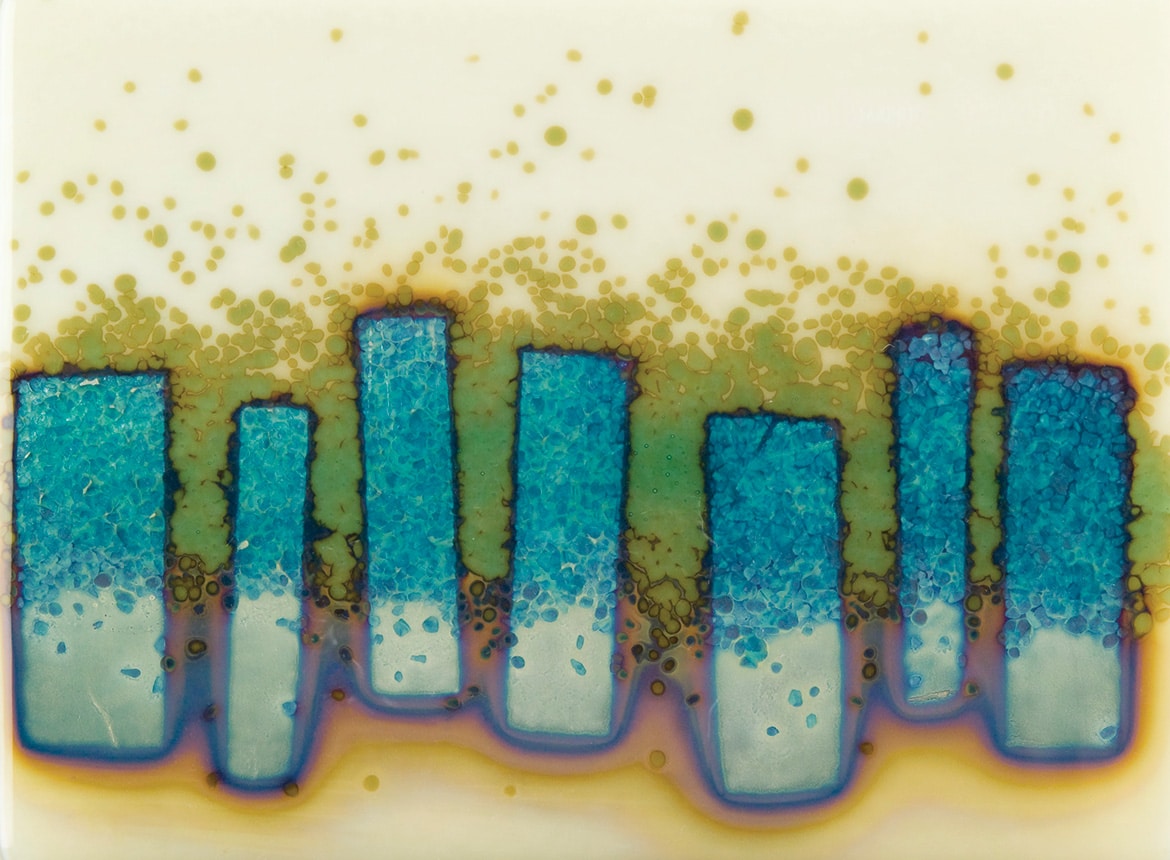
Quick Tip: A Riot of Effects
Simple Layup + Reactions = A Riot of Effects What’s Going On In This Glass? Our piece may look complex, but the colorful effects resulted from just allowing and preventing…
-
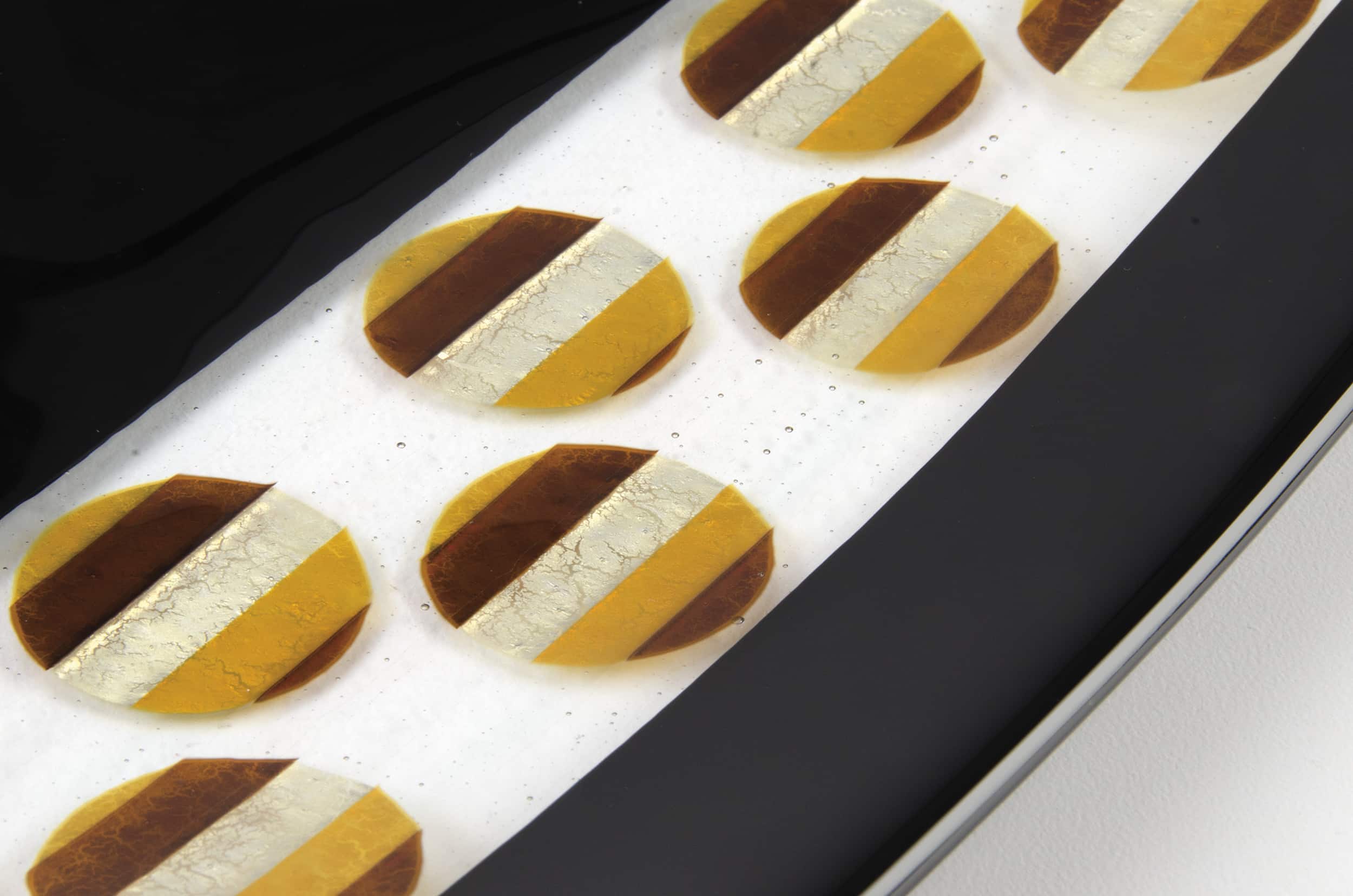
Quick Tip: Alchemy Metallic Palette
Create gold & bronze hues by capping Silver Foil with Bullseye’s Alchemy Clear styles. Design Place silver foil elements on a base of 3 mm Tekta Clear. Make the top…
-
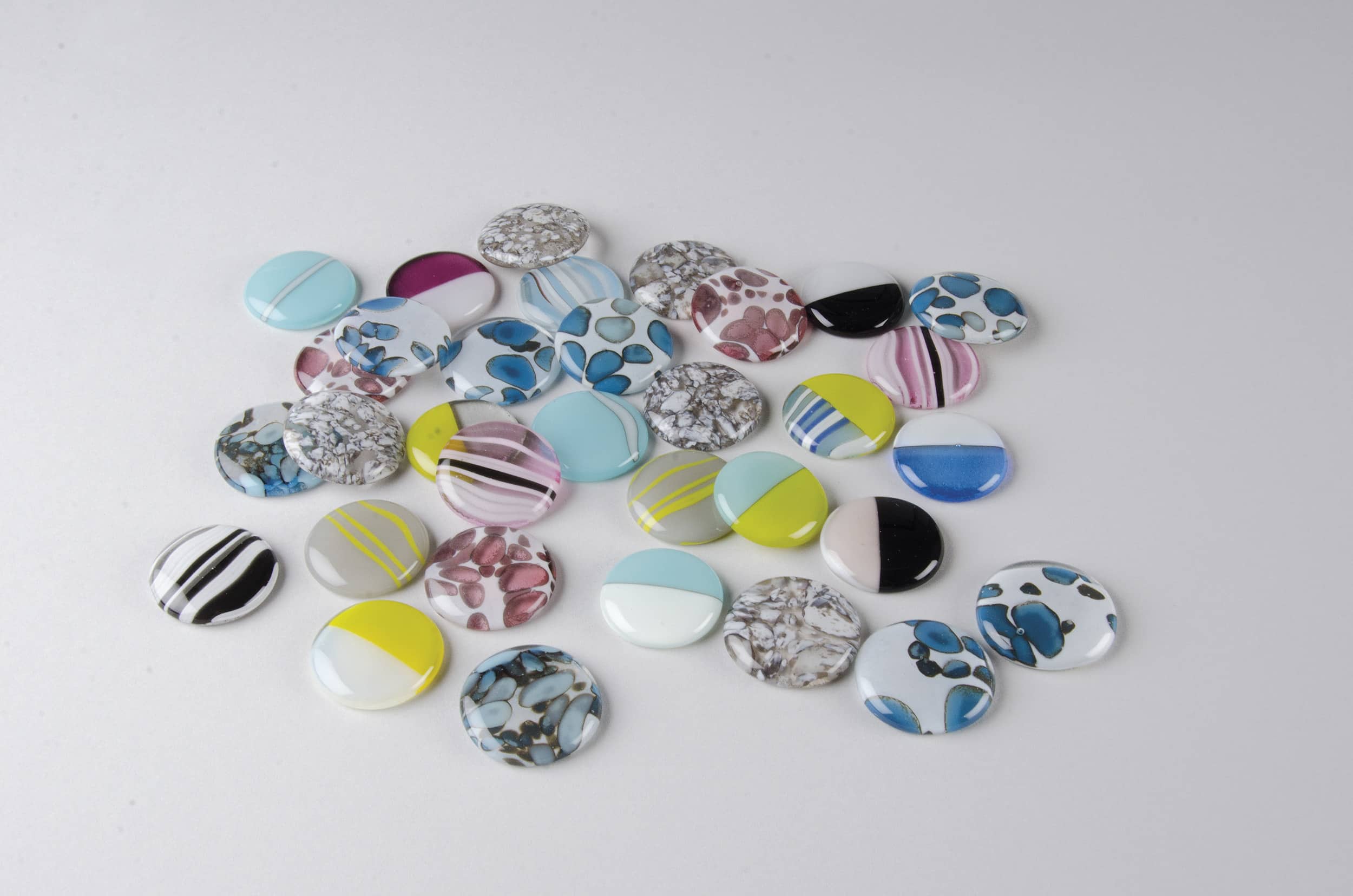
Quick Tip: Circles From Squares
Create round cabochons from squares by using the 6 mm rule! The Stack Top (6 mm): A “lensing” layer of Clear. This layer will stretch considerably. Middle (3–4 mm): This…
-
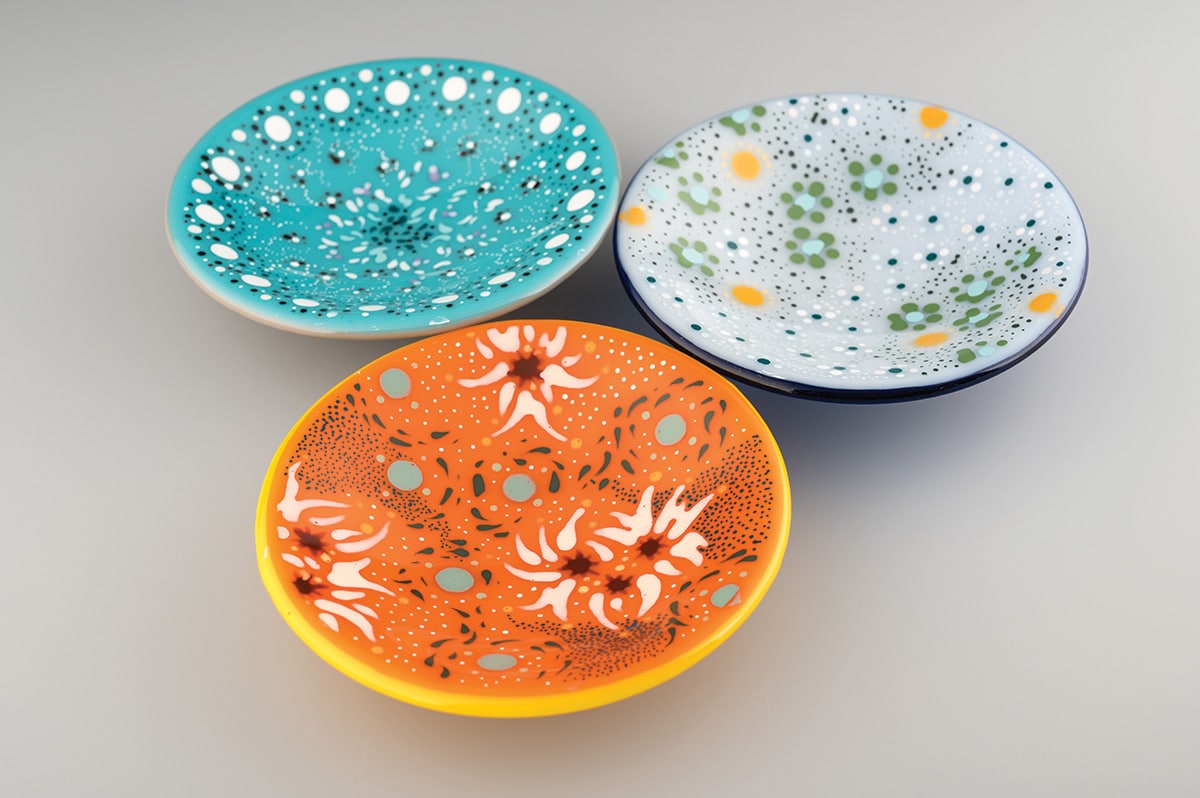
Quick Tip: Color Line Dot Bowls
Make these sweet dotted bowls with Color Line Paints and the simplest of tools! To get started, layer two 4.75˝ circles of colorful 3 mm sheet combinations and fire to…
-
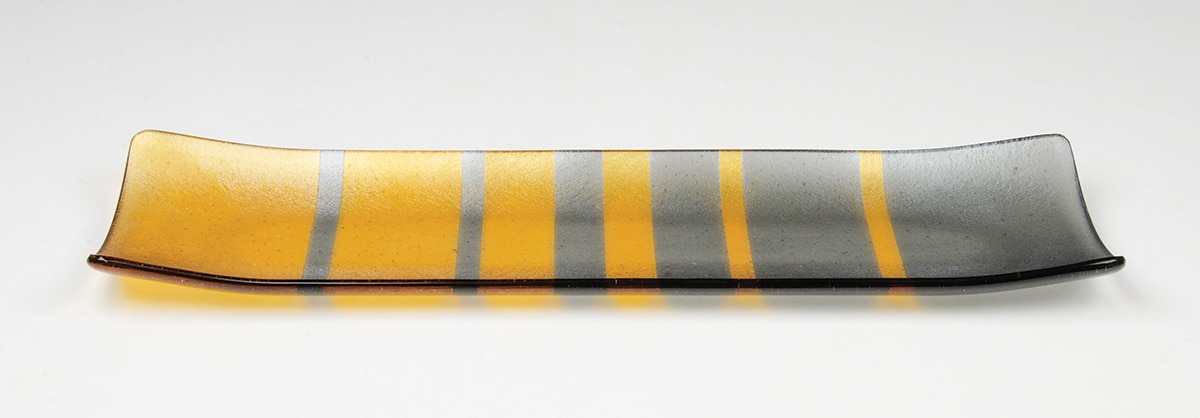
Quick Tip: Fibonacci Fade Plate
Combine mathematics and metallics to create this handsome design! What is the Fibonacci Sequence? The Fibonacci sequence is a numbering system found in nature, from flower petals and pinecones to…
-
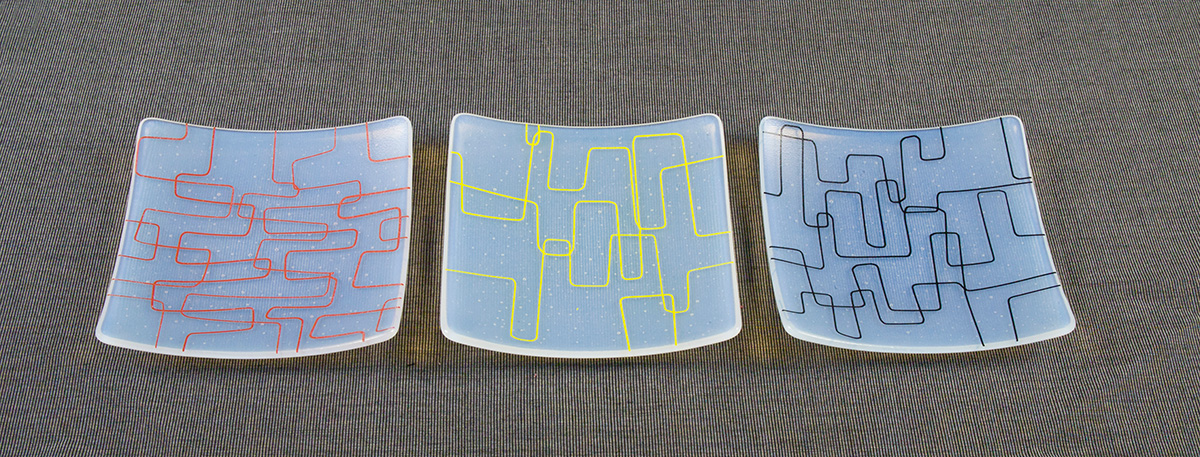
Quick Tip: Fine Lines
Candle-bent Fine Line Stringers bring a lean line quality to this Mid-Century inspired design. Bend the Stringer Holding the stringer with thumbs and forefingers, place the spot you want to…
-
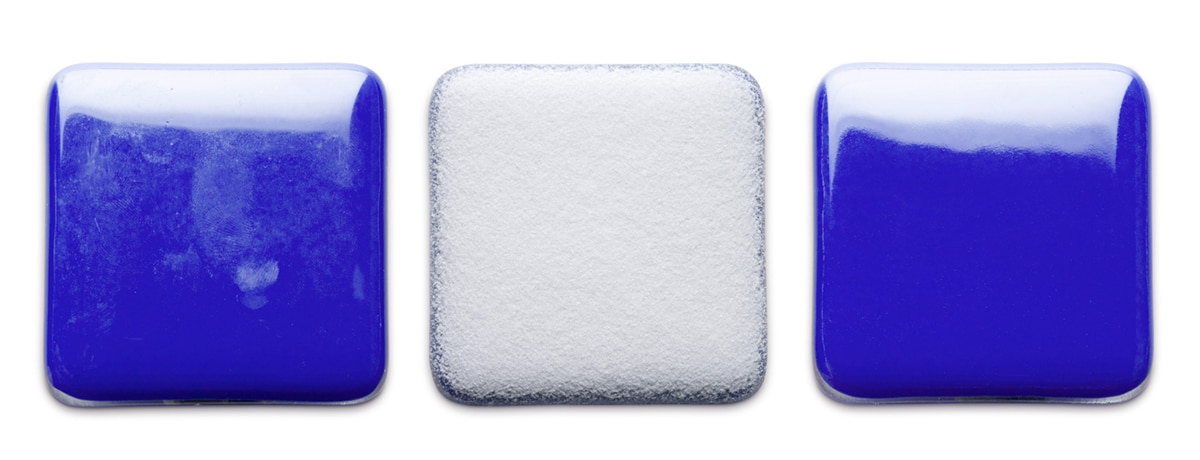
Quick Tip: Fix Surface Flaws
The growth of crystals on glass, aka, devitrification, aka, devit, is not that common or easy to create. But, if devit does appear on your fired glass, there are several…
-
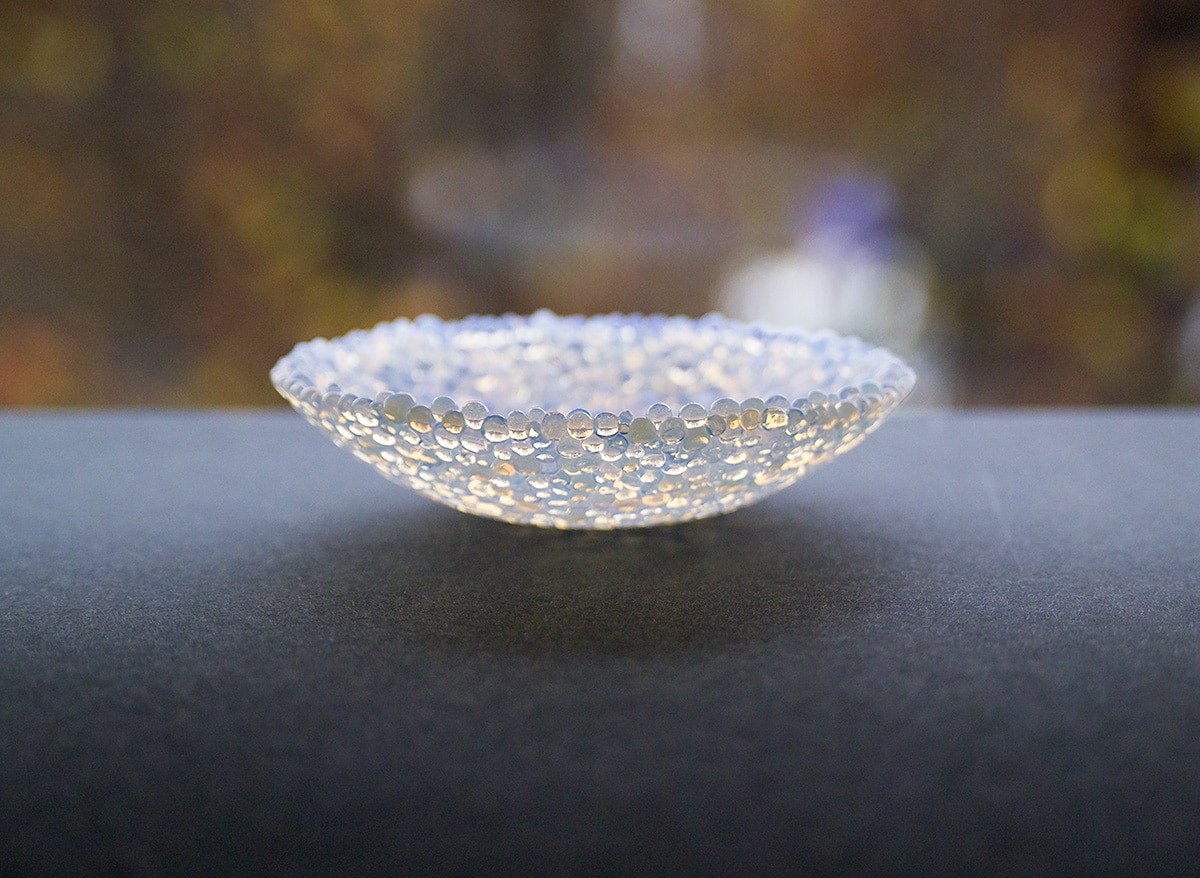
Quick Tip: Frit Balls
Easy to make and fun to use. Scatter pieces of coarse frit (-0003) on a freshly primed kiln shelf and adjust them with tweezers, leaving space around each piece. Fire…
-
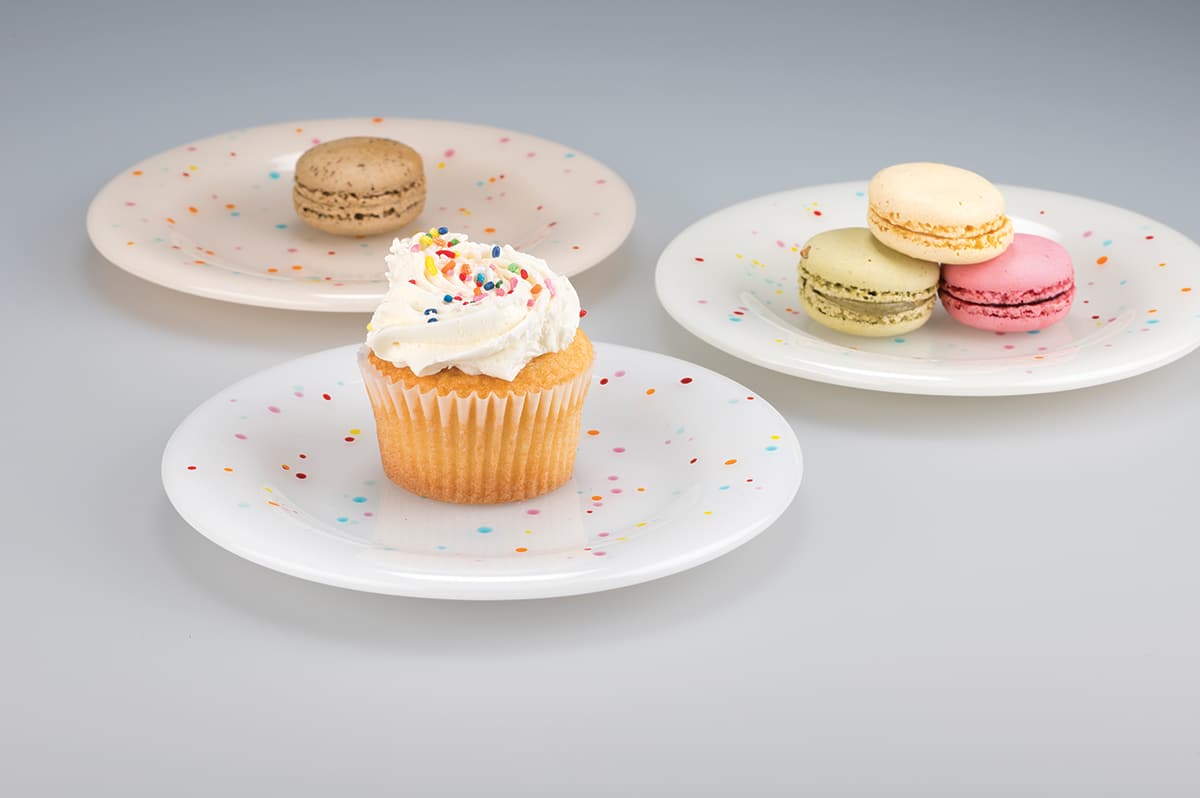
Quick Tip: Fritfetti
Say YES to sprinkles! Steps (4 firings) Making Mini frit Balls The secret to the small dots is to make them with Medium (-0002) Frit. Guidelines include firing on a…
-
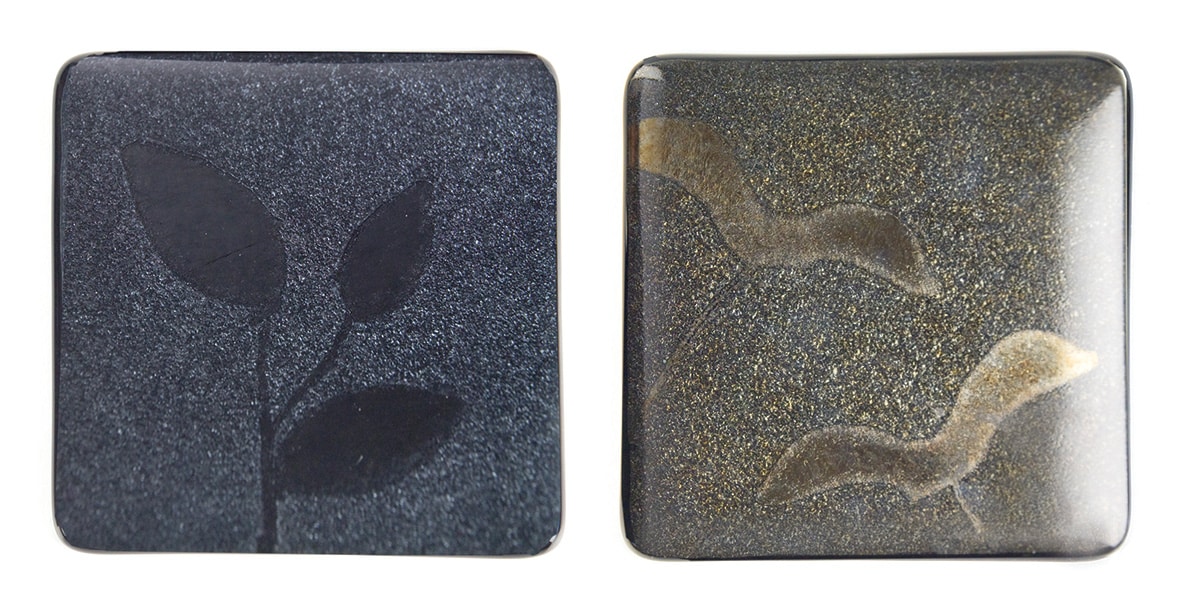
Quick Tip: Glimmering, Shimmering Irids
Gold and Silver Irid + Clear Powder = Shimmering Glass In the tiles above, powdered and exposed iridescent surfaces catch and reflect light differently, producing subtle glimmering effects To make…
-
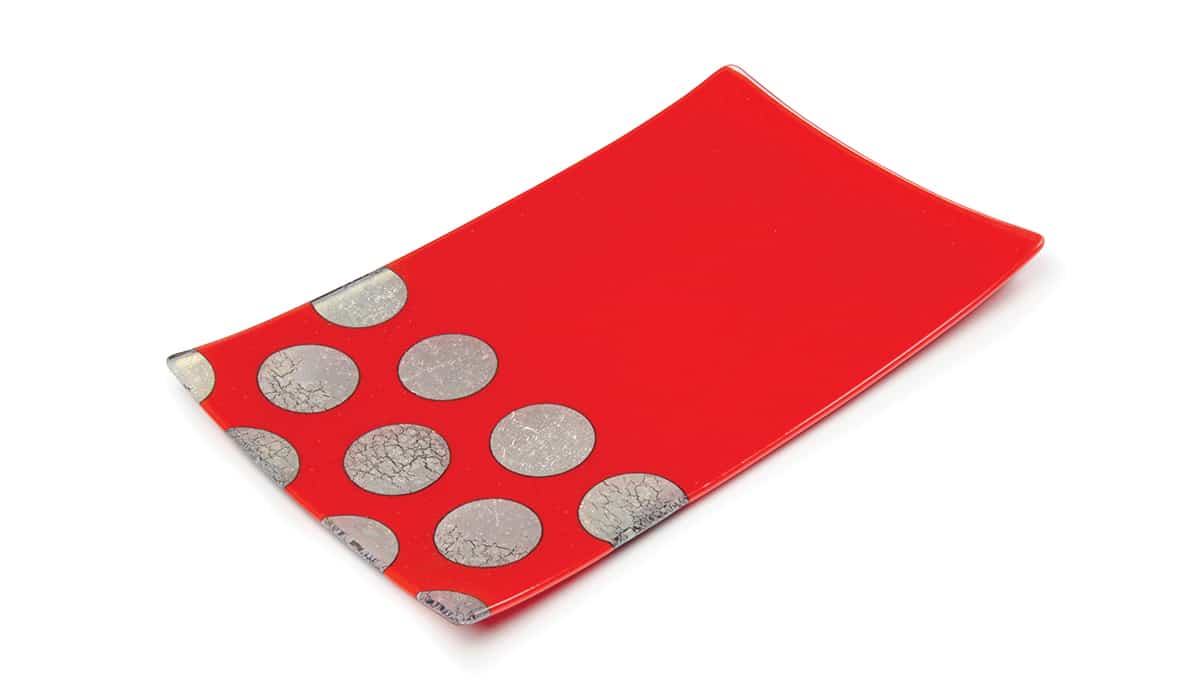
Quick Tip: Holiday Punch
For a festive feel, break out the punch! (The paper punch, that is.) Combine punched silver foil design elements with Tomato Red Opal for something truly festive. The Details Arrange…
-
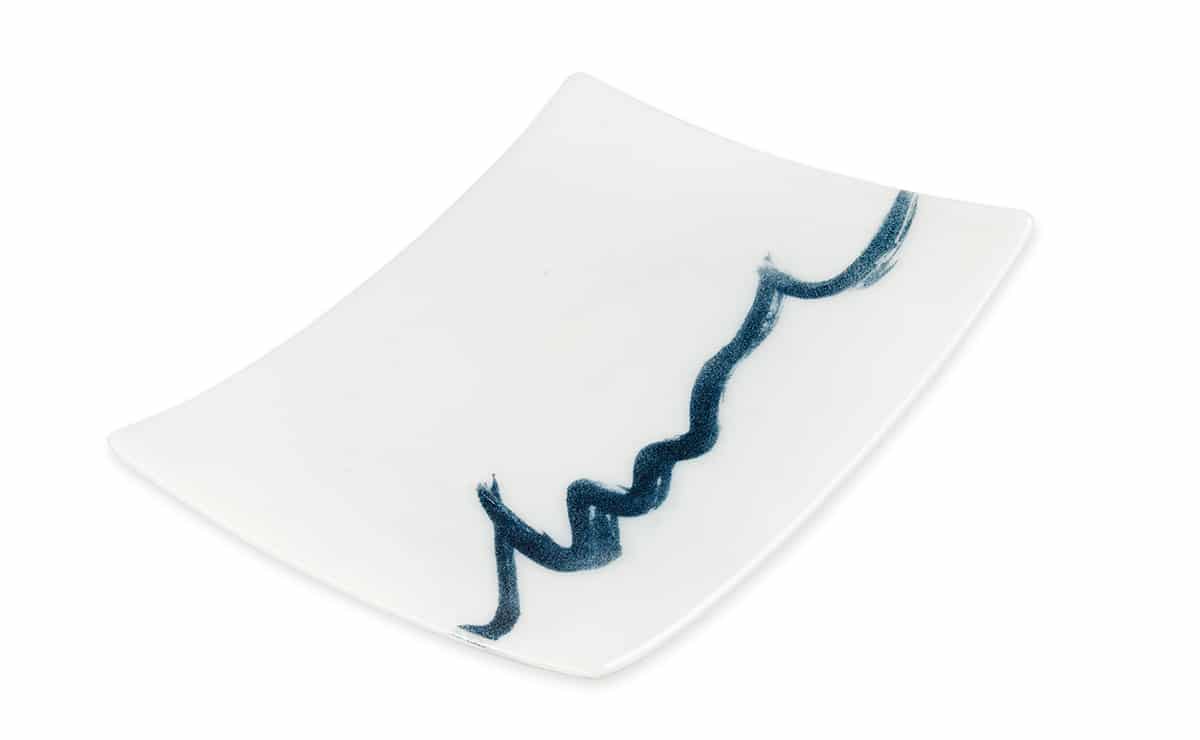
Quick Tip: Inky Blue Brush Strokes
Combine GlasTac and Aventurine Blue Powder to create gestural brush strokes. Think of sumi-e and other East Asian styles of brush painting and calligraphy. Here’s How it Works Using a…
-
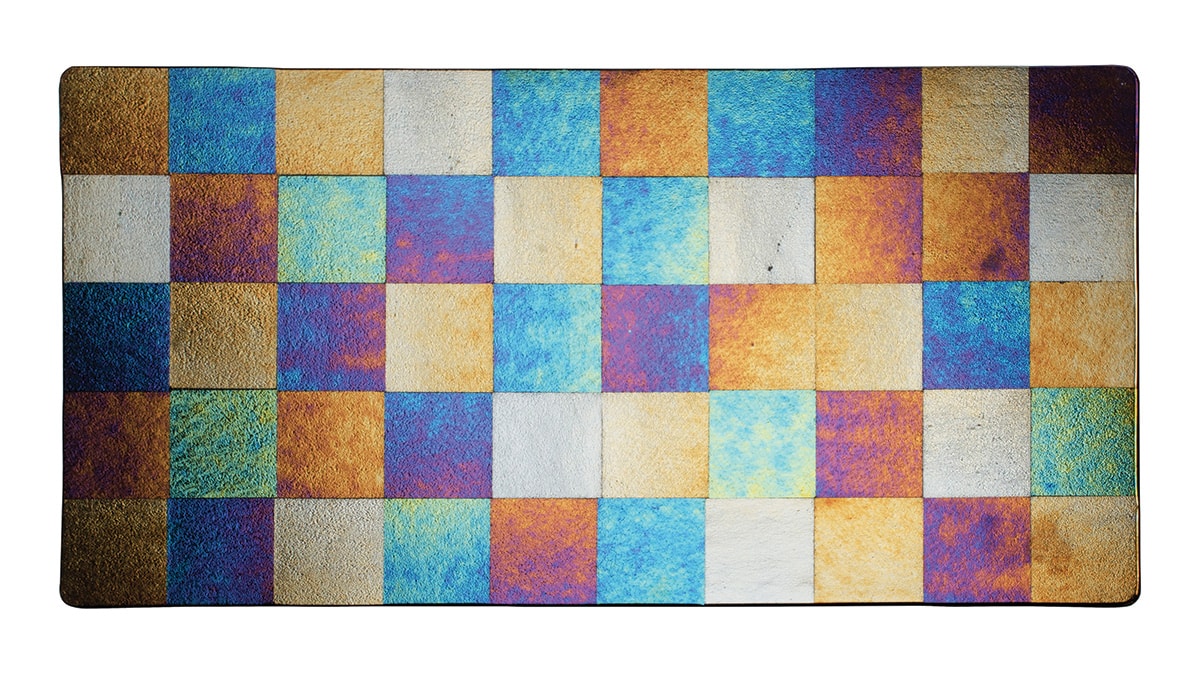
Quick Tip: Iridescent Squares
Transform a single sheet of Rainbow Iridescent glass into shimmering mosaic design. The Details Start with a 3 mm sheet of a saturated transparent color (or black) with a Rainbow…
-
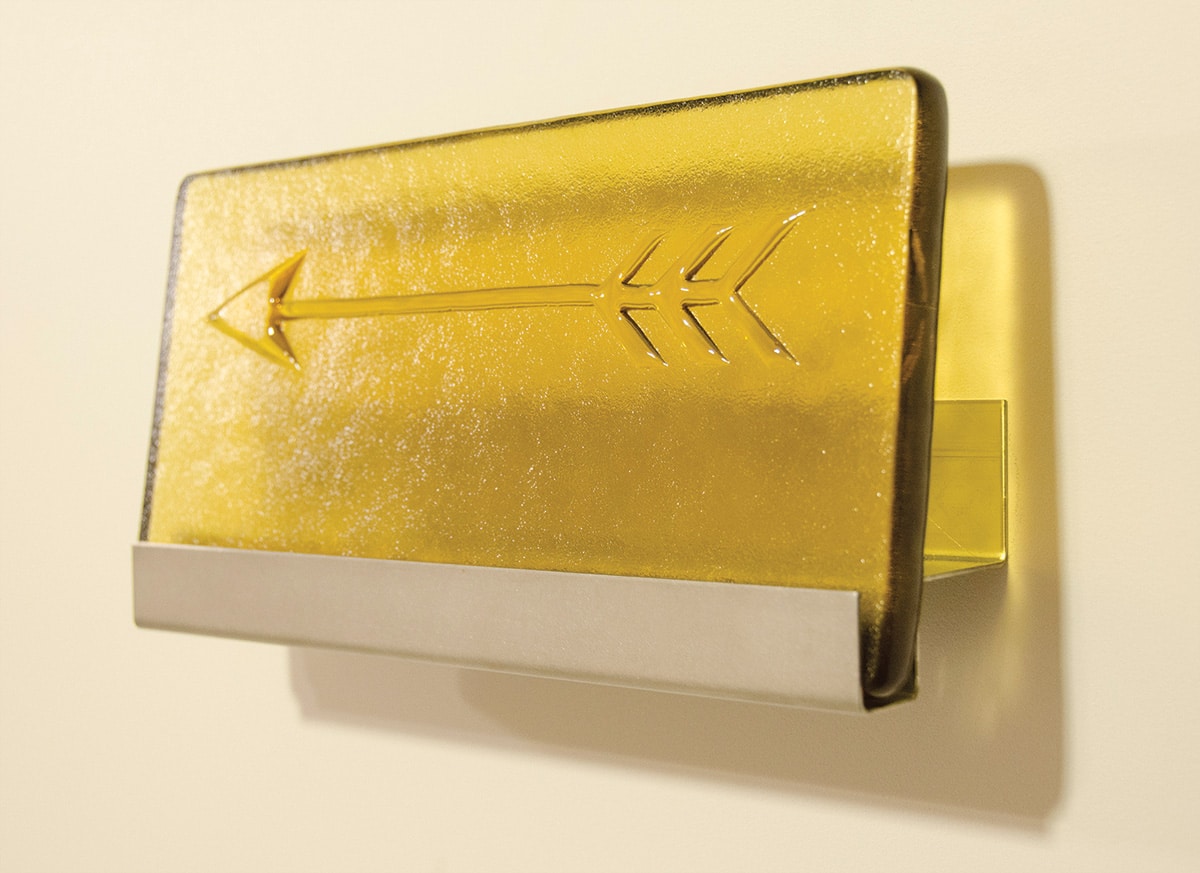
Quick Tip: Kilncarved Billet
Create a textured block of glass using ceramic fiber paper, a billet, and the right amount of heat! Design with Texture In the kiln, the billet conforms to your fiber…
-
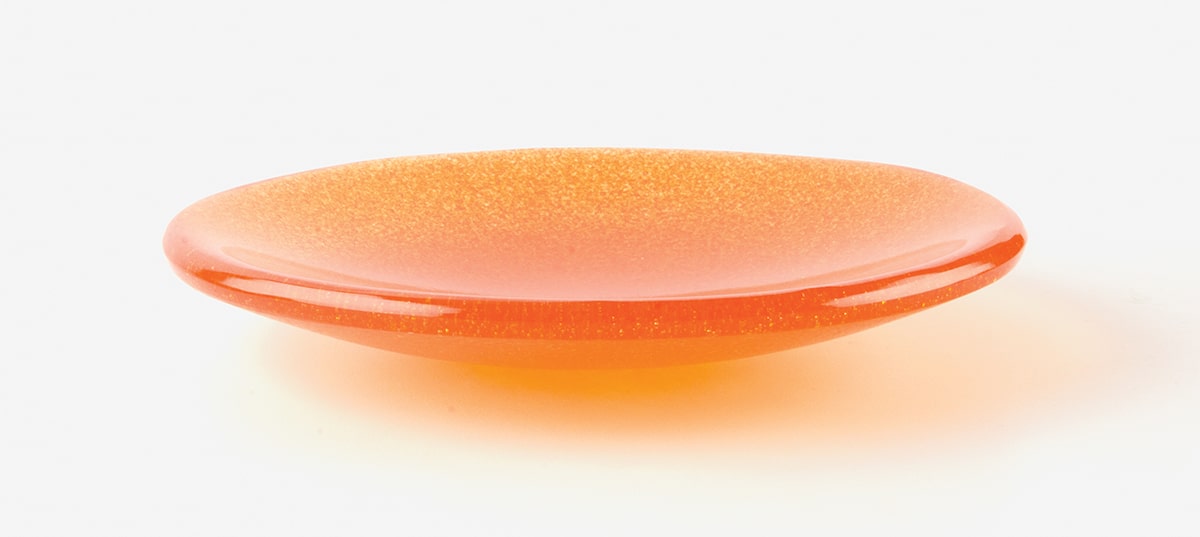
Quick Tip: Kilncast and Slumped Bowl
Get experience in volume calculation, frit tinting, and more as you create a kilncast disc from a frit and powder mixture, coldwork the edges, and slump it into a graceful…
-
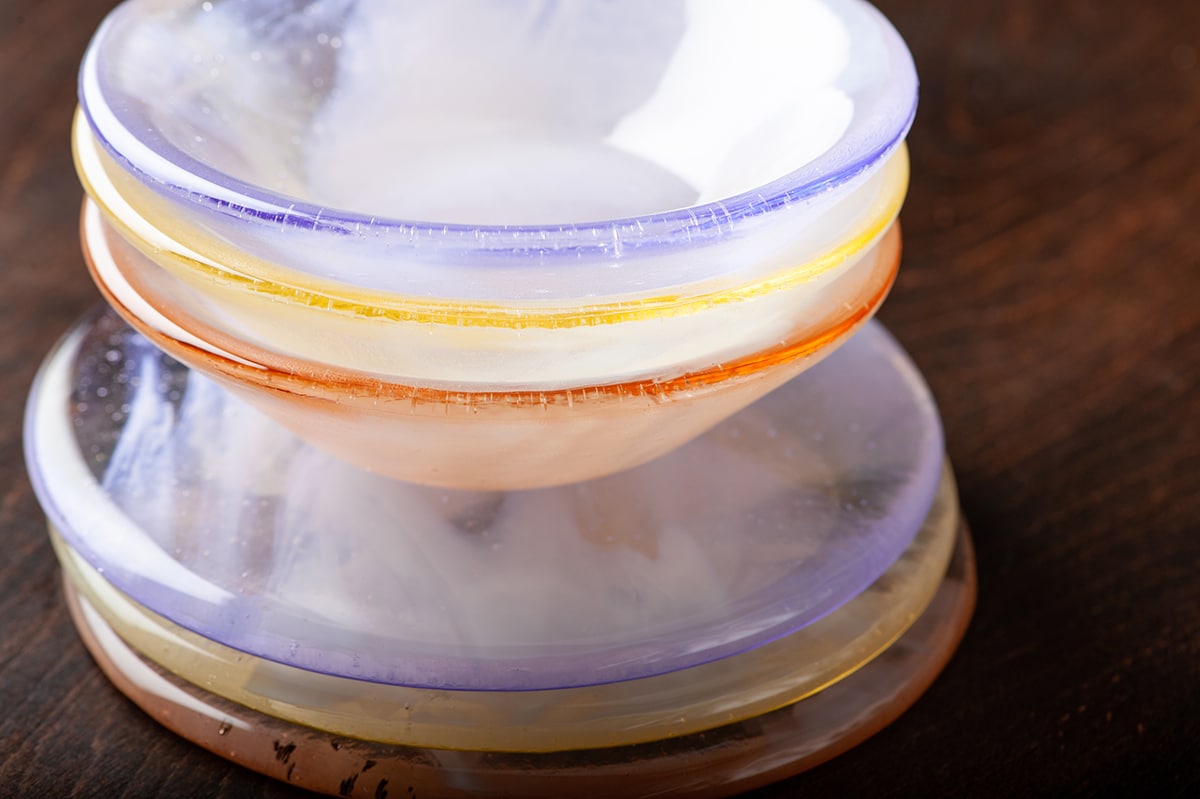
Quick Tip: Little Wisp Bowls
Wisps of White and Clear, let the color shine through. Create your own streaky color palette. Layer Clear and White Streaky sheet glass over transparent tint glass styles. Slump in…
-
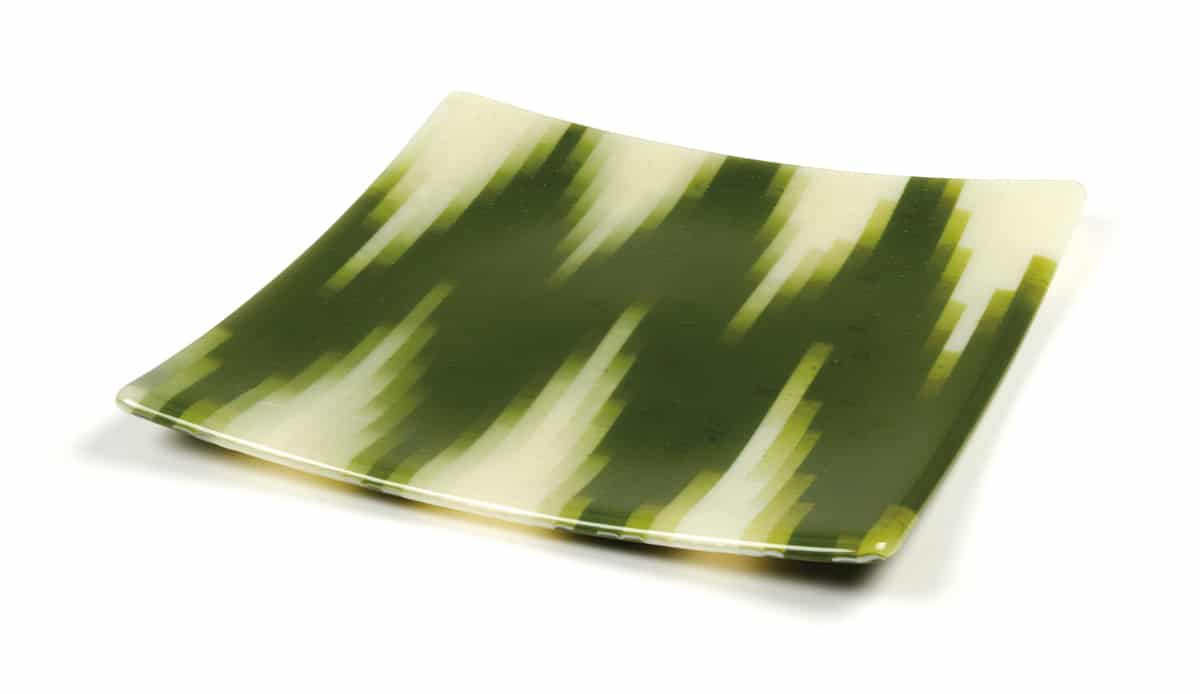
Quick Tip: Making a Chevron Design
Making this chevron plate is a snap with Cascade sheet glass. Steps Tip Materials
-
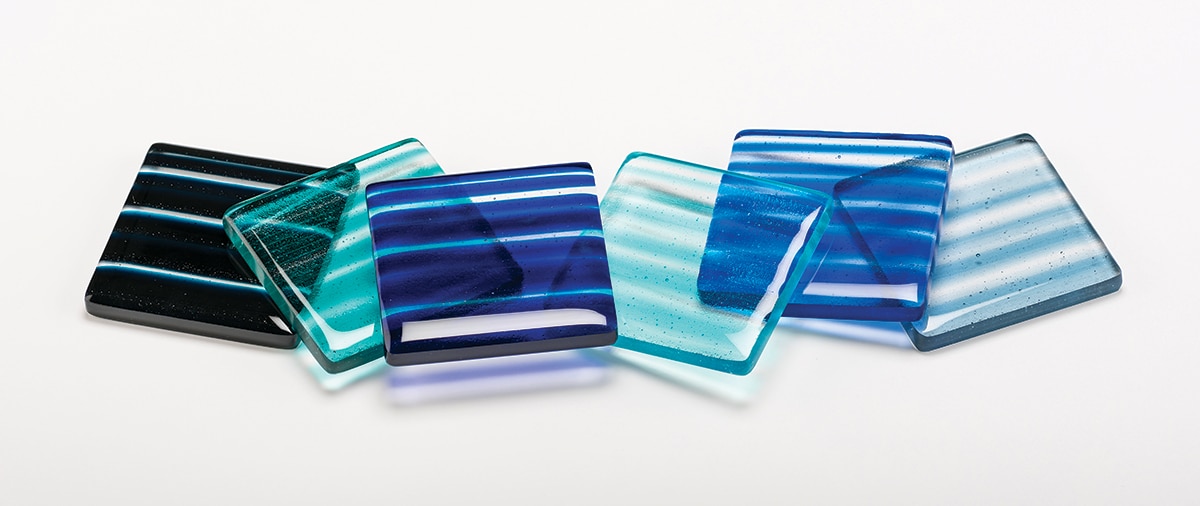
Quick Tip: On the Edge with Transparents
Transparents transform with on-edge strip construction. Cut 3 mm sheet glass into 1 cm wide strips, turn those on edge, and—presto!—color saturation increases. In the pairings below, notice how the…
-
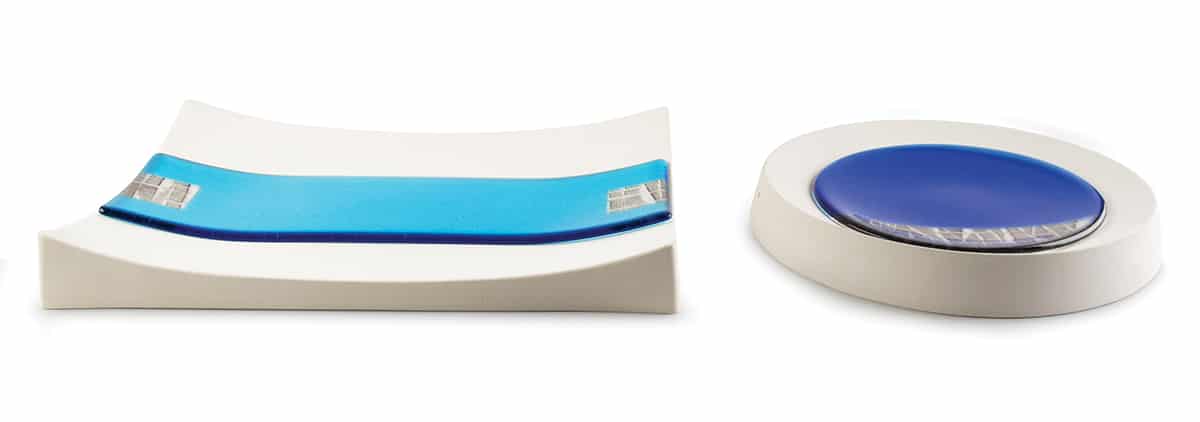
Quick Tip: Multitasking Molds
There is more than meets the eye with some slumping molds. They can certainly be used to form pieces that utilize the entire surface, but consider the options when slumping…
-
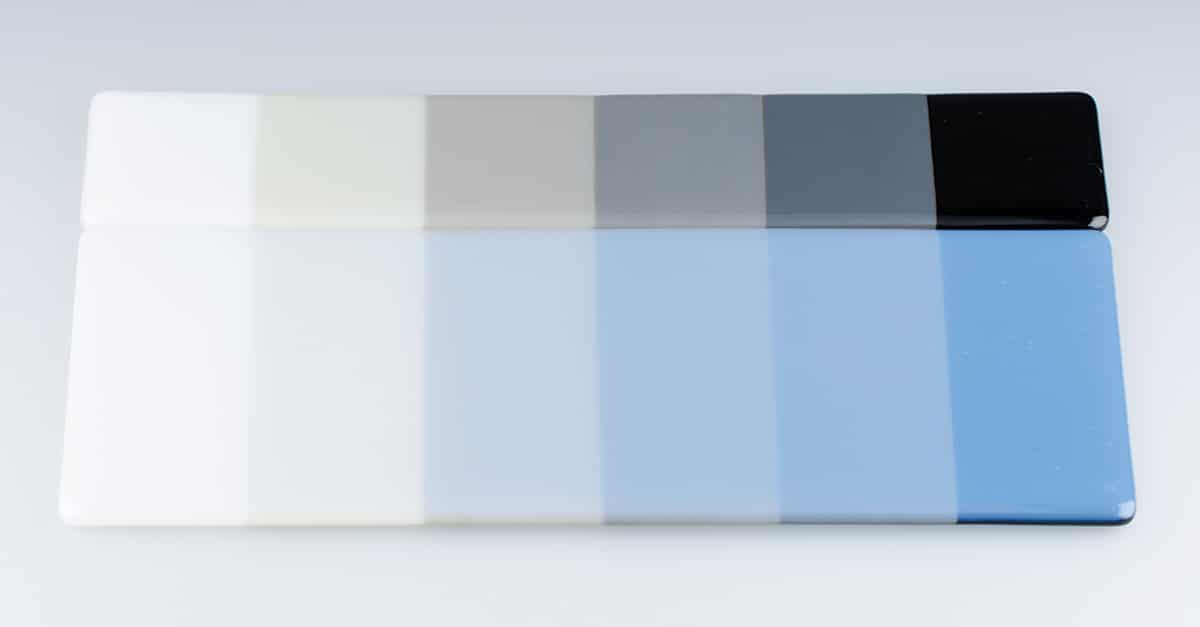
Quick Tip: Opaline Overlays
Opaline sheet glass. Amazing on its own; plays nicely with others. As in its a great tool to expand your color palette in kilnforming, creating new colors with distinct properties.…
-
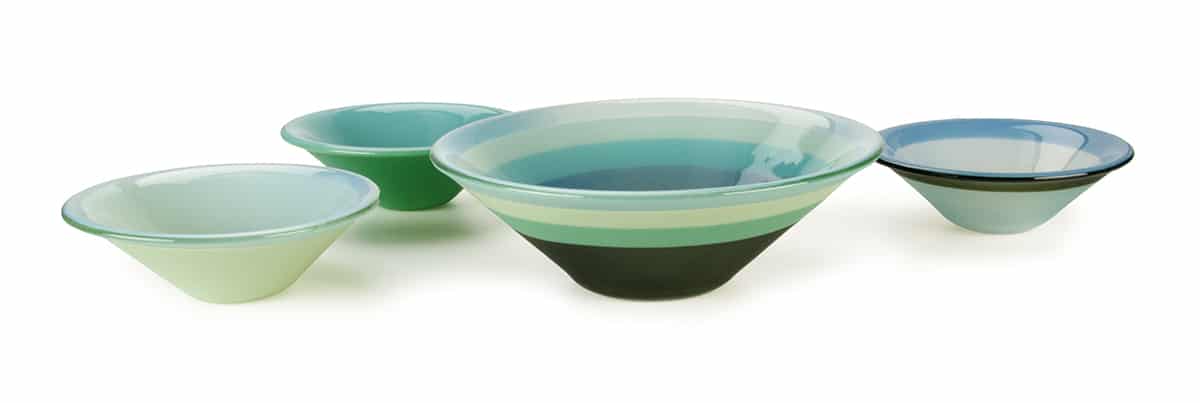
Quick Tip: Put a Ring on It
Explore the possibilities of a palette of green rings capped with Opaline! As an overlay, Opaline scatters light for a dramatic impact on base colors. Note the blue hue it…
-
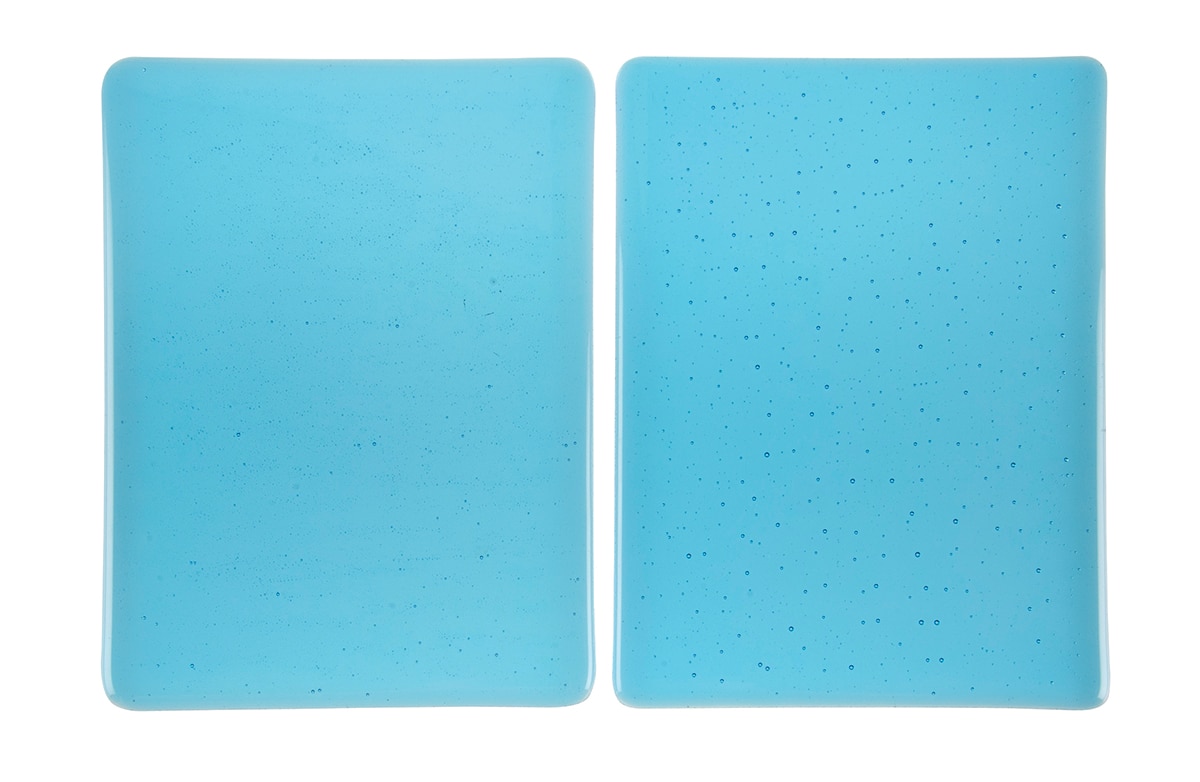
Quick Tip: Powder Power
Want to minimize the look of bubbles in fused pieces? This technique used in kilnforming circles for many years has also worked well for us. Add a light application of…
-
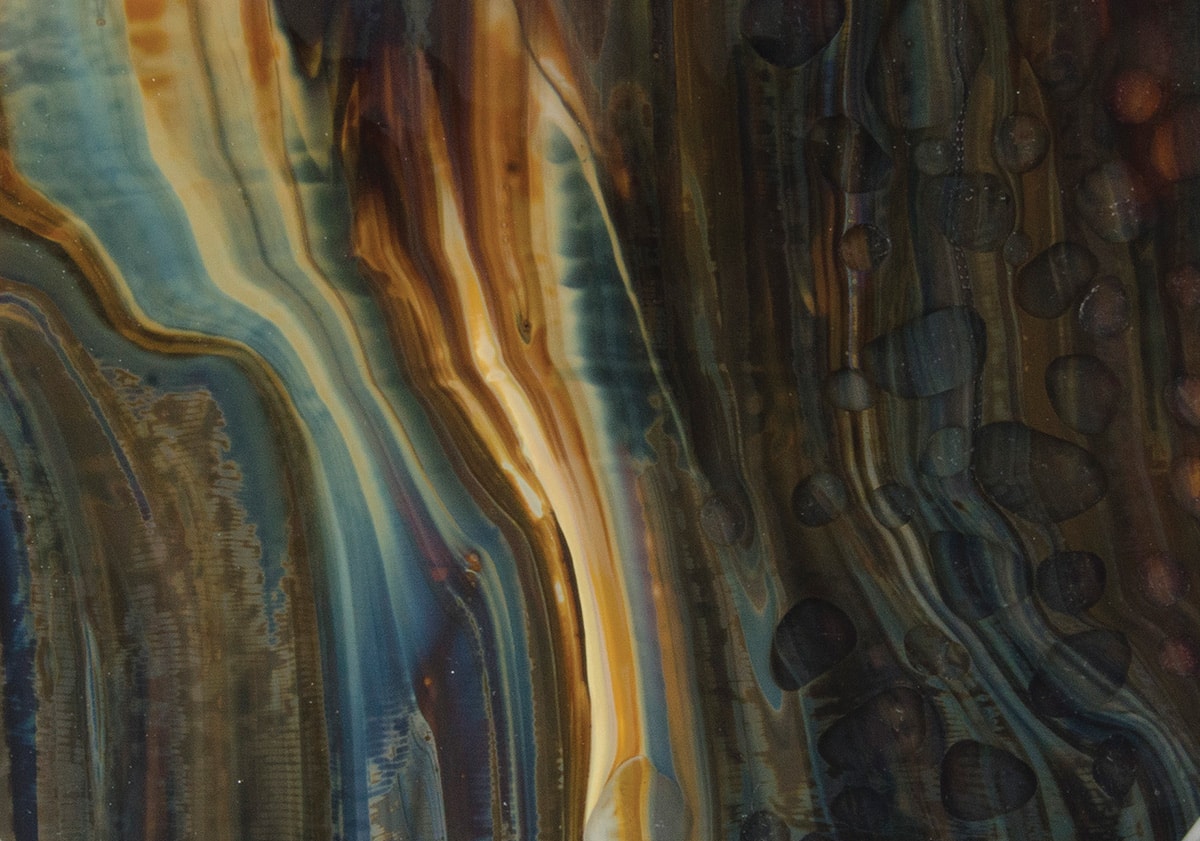
Quick Tip: Petrified Wood
Petrified Wood is Bullseye’s magical unicorn streaky. Its unique combination of glasses results in dramatic internal reactions at full-fuse temperatures. Here are two ideas for making this glass sing. Copper…
-
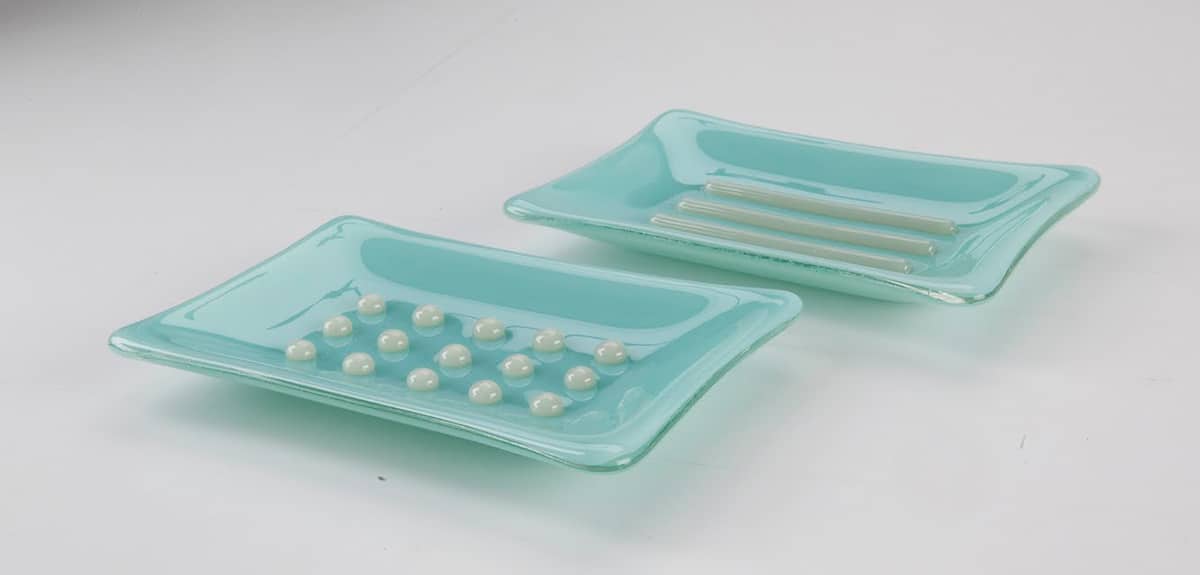
Quick Tip: Raise the Bar on Your Soap Dish
Add an accent color and functionality to a soap dish with fusible rods. We paired Robin’s Egg Blue Opalescent with Driftwood Gray rod, but you could use any combination. Steps…
-
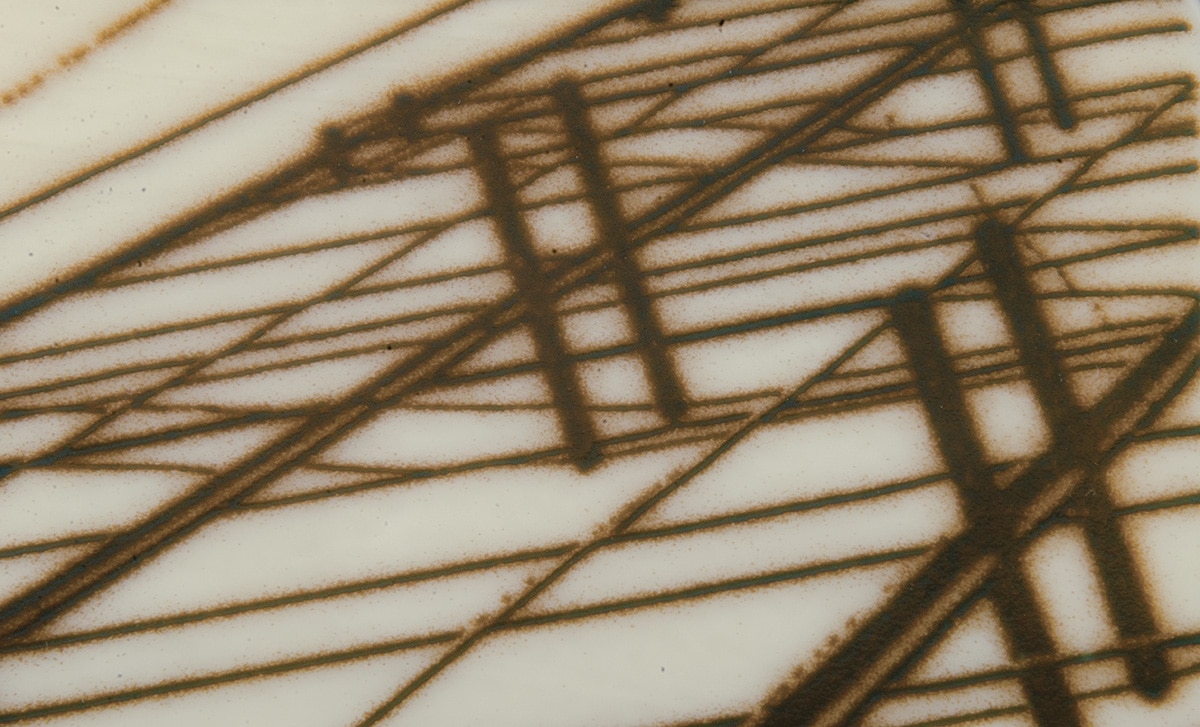
Quick Tip: Reaction Action
When certain Bullseye glasses are fired in contact with one another, their chemistries interact to create varied effects. This article details some of our favorite reactions. Reactive Combinations Resources
-
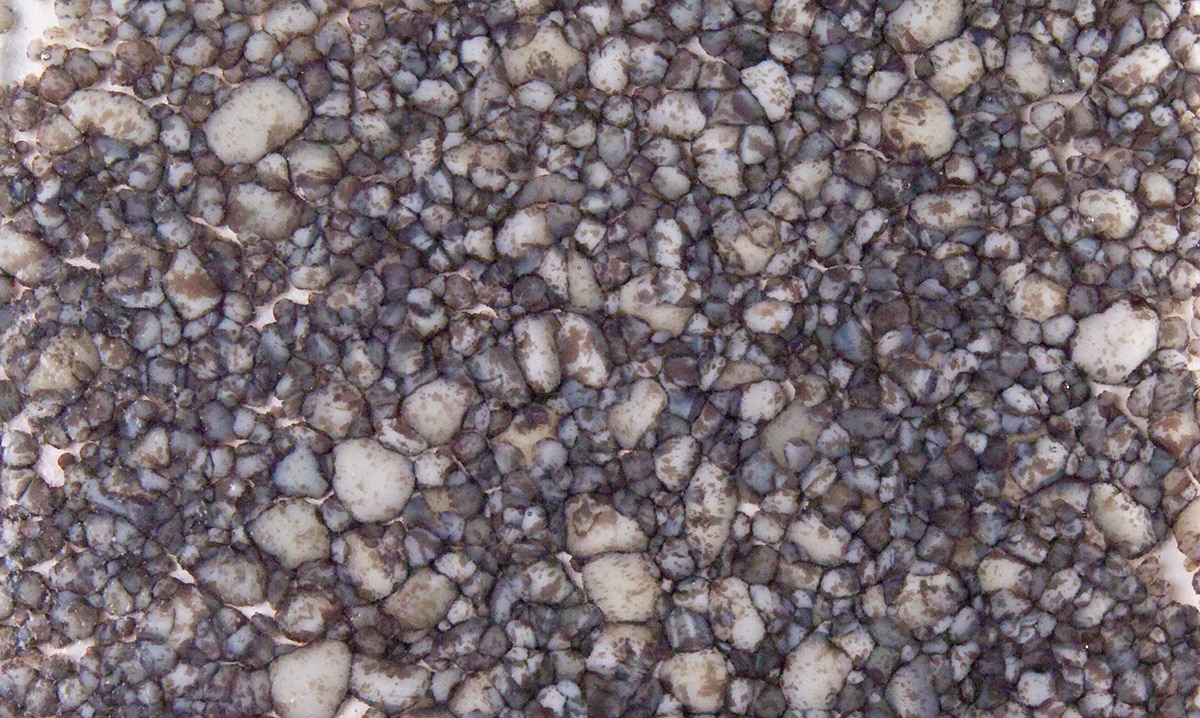
Quick Tip: River Rock Reaction
Make a part sheet with stony effects! REACTIVITY IS KEY to achieving the pebbly look of the part sheet featured here. Under kiln heat, sulfur-bearing frits react with lead-bearing powder…
-
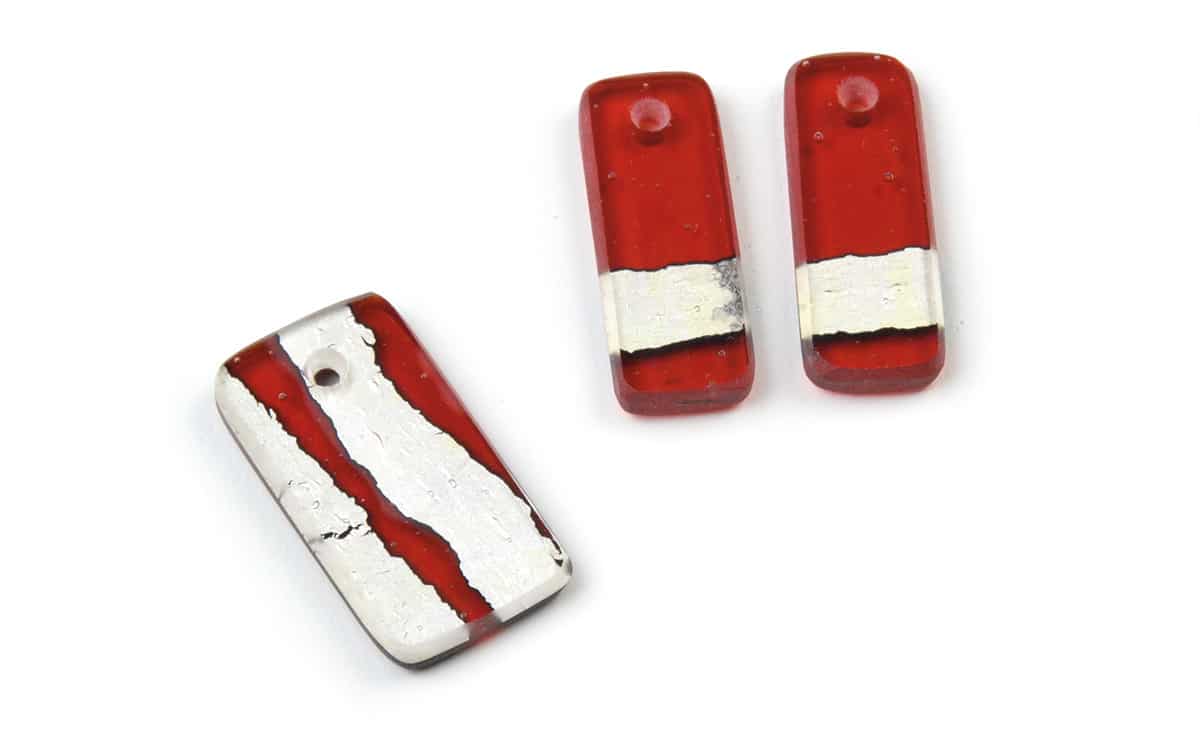
Quick Tip: Silver Stripe Jewelry
Wearable glass with flash! It’s all in the details—torn silver paired with candy apple red, and drilled holes for stringing. Steps
-
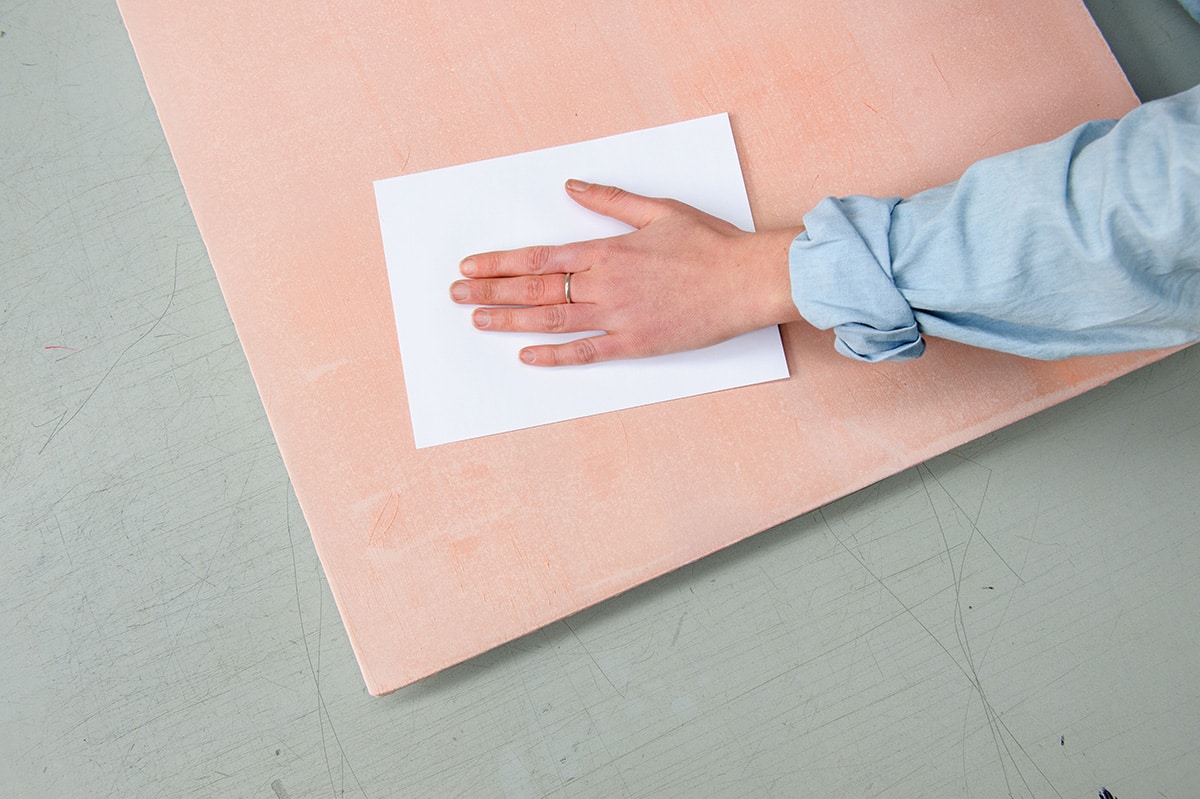
Quick Tip: Smooth It Out
Create a smooth, uniform surface on the shelf-side of your fired work. The Details Recommended Resources
